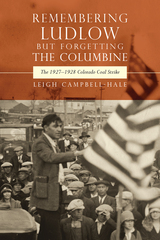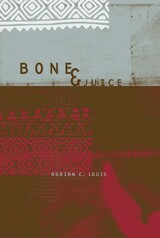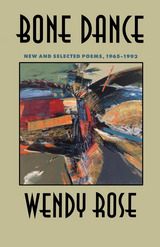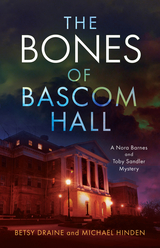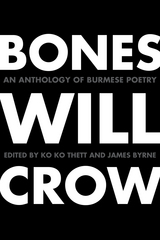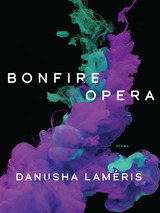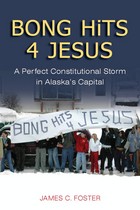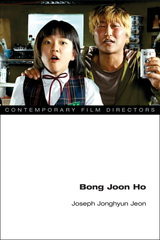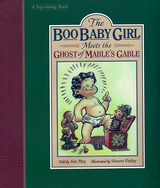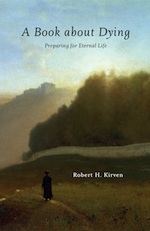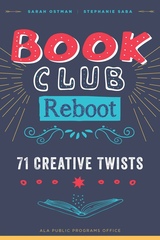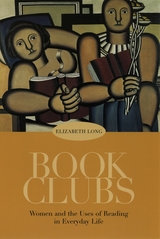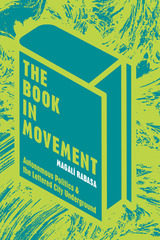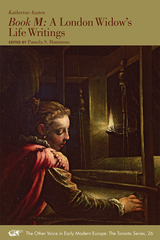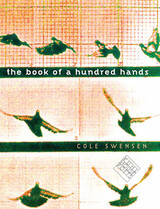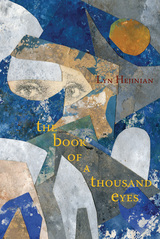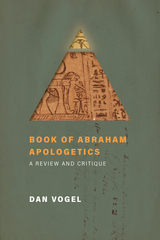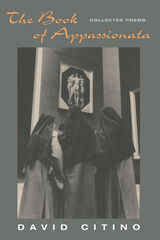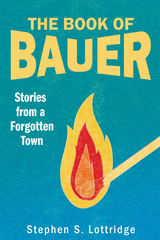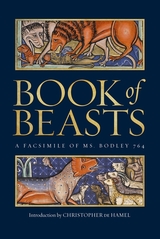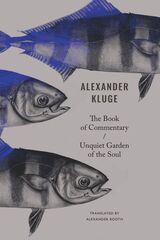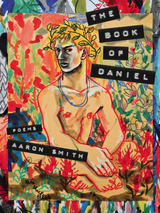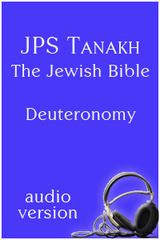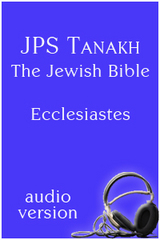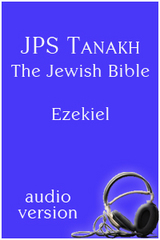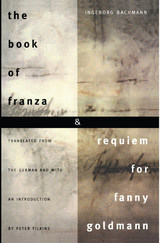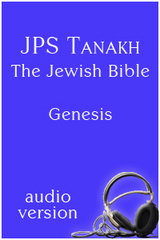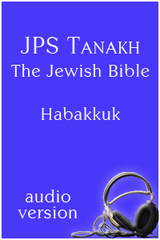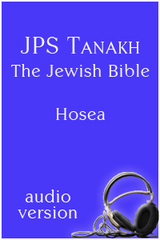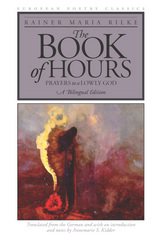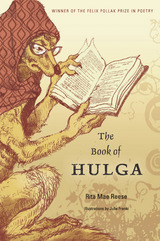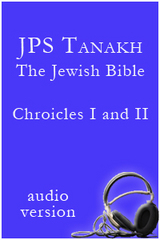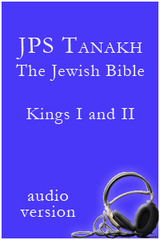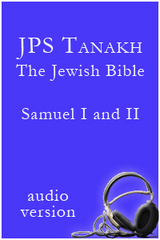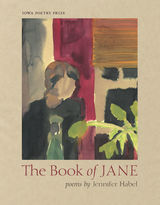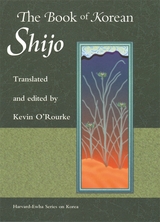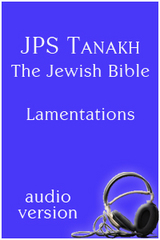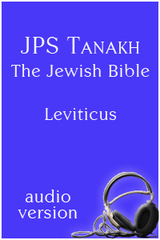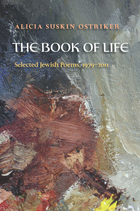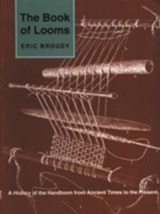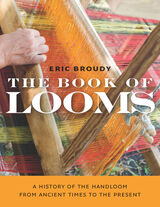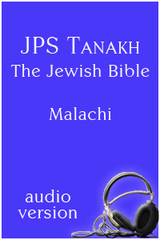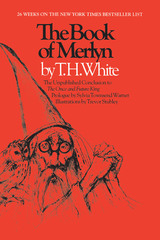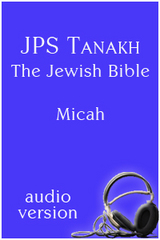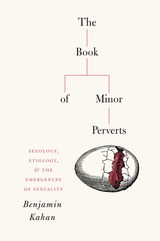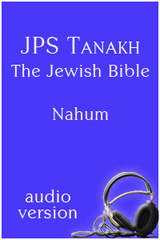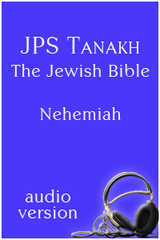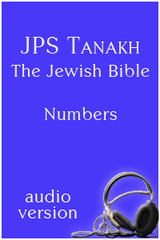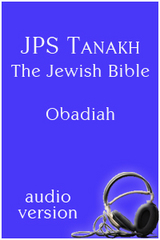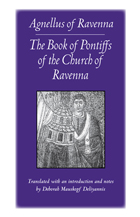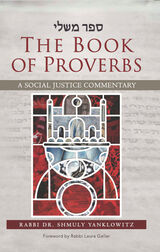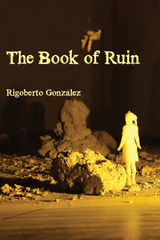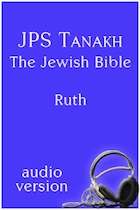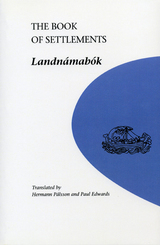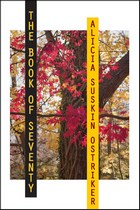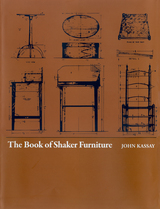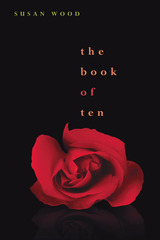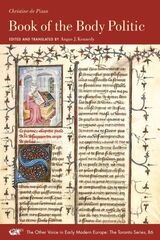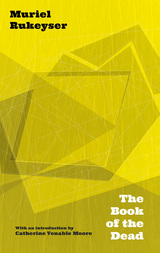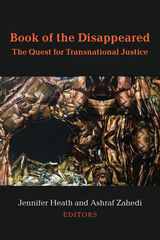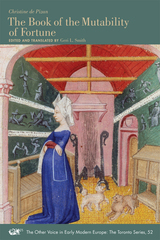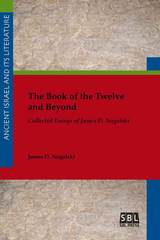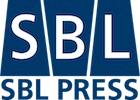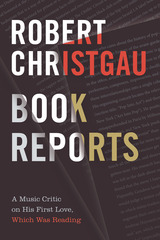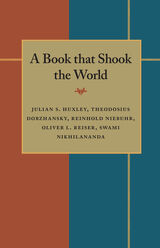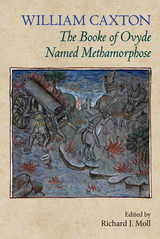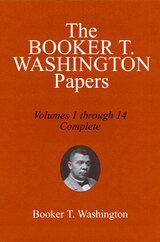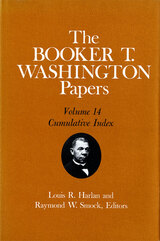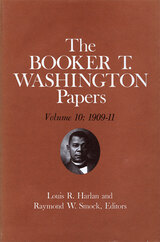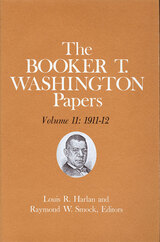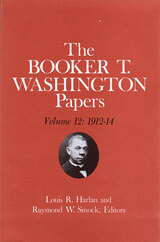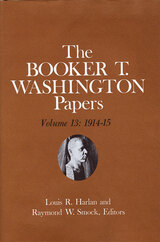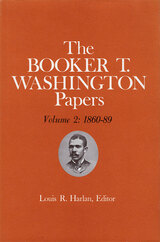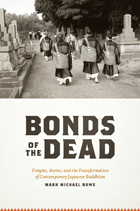 Bonds of the Dead: Temples, Burial, and the Transformation of Contemporary Japanese Buddhism
Mark Michael Rowe
University of Chicago Press, 2011 Despite popular images of priests seeking enlightenment in snow-covered mountain temples, the central concern of Japanese Buddhism is death. For that reason, Japanese Buddhism’s social and economic base has long been in mortuary services—a base now threatened by public debate over the status, treatment, and location of the dead. Bonds of the Dead explores the crisis brought on by this debate and investigates what changing burial forms reveal about the ways temple Buddhism is perceived and propagated in contemporary Japan. Mark Rowe offers a crucial account of how religious, political, social, and economic forces in the twentieth century led to the emergence of new funerary practices in Japan and how, as a result, the care of the dead has become the most fundamental challenge to the continued existence of Japanese temple Buddhism. Far from marking the death of Buddhism in Japan, Rowe argues, funerary Buddhism reveals the tradition at its most vibrant. Combining ethnographic research with doctrinal considerations, this is a fascinating book for anyone interested in Japanese society and religion.
 The Bonds of War: A Story of Immigrants and Esprit de Corps in Company C, 96th Illinois Volunteer Infantry
Diana L. Dretske
Southern Illinois University Press, 2021 The bond of citizenship earned during the Civil War
When curator Diana L. Dretske discovered that the five long-gone Union soldiers in a treasured photograph in the Bess Bower Dunn Museum were not fully identified, it compelled her into a project of recovery and reinterpretation. Utilizing an impressive array of local and national archives, as well as private papers, the author’s microhistorical approach records events that often go unnoticed, such as a farmer enlisting in the middle of a crop field, a sister searching her brother’s face for signs of war, and an immigrant dying in an effort to become a good American citizen.
This book, the most intensive examination of the 96th Illinois Volunteer Infantry since the regiment’s history was published in 1887 centers on immigrants from the British Isles who wished to be citizens of a country at war with itself. Far removed from their native homelands, they found new promise in rural Illinois. These men, neighbors along the quiet Stateline Road in Lake County, decide to join the fighting at its most dangerous hour. The bonds of war become then the bonds of their new national identity.
The Bonds of War uncovers the common soldier from the cataclysm that is the American Civil War by offering a collective biography of five soldiers of the 96th in the Western Theater. The human drama of their lives unfolds before the reader on battlefields such as Chickamauga and within the high pine stockades of Andersonville. Their lives argue that those who seem to matter least in military history are the very ones who can tell us the most about the experience of war and the reasons for remembering.
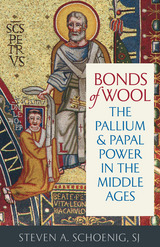 Bonds of Wool: The Pallium and Papal Power in the Middle Ages
Steven A. Schoenig
Catholic University of America Press, 2016 The pallium was effective because it was a gift with strings attached. This band of white wool encircling the shoulders had been a papal insigne and liturgical vestment since late antiquity. It grew in prominence when the popes began to bestow it regularly on other bishops as a mark of distinction and a sign of their bond to the Roman church. Bonds of Wool analyzes how, through adroit manipulation, this gift came to function as an instrument of papal influence. It explores an abundant array of evidence from diverse genres - including chronicles and letters, saints' lives and canonical collections, polemical treatises and liturgical commentaries, and hundreds of papal privileges - stretching from the eighth century to the thirteenth and representing nearly every region of Western Europe. These sources reveal that the papal conferral of the pallium was an occasion for intervening in local churches throughout the West and a means of examining, approving, and even disciplining key bishops, who were eventually required to request the pallium from Rome.
Bone & Juice
Adrian C. Louis
Northwestern University Press, 2001 Adrian C. Louis's largely autobiographical verse is characterized by a bluntness born of self-irony and self-criticism. He attacks his subjects with an emotional engagement that is both tender and honest. Within the context of fallen ideals and lost spirituality among Native Americans, he composes elegies for his mentally disabled wife and describes scenes from "Cowturdville", his name for the town near a reservation where he lived. Mesmerizing the reader with the rhythm of his lively lines, Louis demonstrates a stylistic strength that is both accessible and demanding. His candid portrayals of Native American life and his social and moral critique of American consumerism and conformity are darkly hilarious odes to the cultural boundaries between Americans and Native Americans.
Bone Dance: New and Selected Poems, 1965-1993
Wendy Rose
University of Arizona Press, 1994 A prolific voice in Native American writing for more than twenty years, Rose has been widely anthologized, and is the author of eight volumes of poetry. Bone Dance is a major anthology of her work, comprising selections from her previous collections along with new poems. The 56 selections move from observation of the earth to a search for one's place and identity on it. In an introduction written for this anthology, Rose comments on the place each past collection had in her development as a poet.
"Rich in poems which enhance our awareness of the human complexity of our social and moral dilemmas." —Book Review Digest
"There is a whisper in the wind among the chapters . . . and a singing rain beyond the window." —American Indian Culture Research Journal
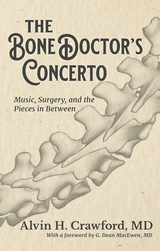 The Bone Doctor's Concerto: Music, Surgery, and the Pieces in Between
Alvin H. Crawford, MD
Ohio University Press, 2023 Published by the University of Cincinnati Press Born in Memphis, Tennessee in 1939, Dr. Alvin Crawford grew up and attended medical school in a segregated world. Beginning with his early life in Orange Mound—a self-contained community for freed slaves established in the 1890s—Crawford’s autobiography describes his flirtation with a music degree and time spent playing in jazz bands through the segregated South. In 1960, Crawford began his ground-breaking medical career with his entrance into the University of Tennessee College of Medicine, becoming the school’s first African American student. After completing his medical training and traveling the world as a surgeon for the Navy, Crawford found himself in Cincinnati, where he established the Comprehensive Pediatric Orthopedic Clinic at Cincinnati Children’s Hospital, the first in the region. Underlying this story are the systemic and very personal incidents of racism Crawford experienced throughout his career. His autobiography is a personal account of segregation, integration, ambition, hard work, and taking risks.
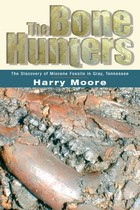 The Bone Hunters: The Discovery Of Miocene Fossils In Gray, Tennessee
Harry L. Moore
University of Tennessee Press, 2004 In the spring and summer of 2000, geologists working for the Tennessee Department of Transportation made an extraordinary find as they examined soil at a routine road construction project: the digging at Gray, Tennessee, had uncovered a fossil site containing bones that would turn out to be at least five million years old. Harry Moore and his colleagues, along with researchers from the state and the University of Tennessee, were stunned as they unearthed the fossilized remains of tapirs, elephants, rhinoceroses, alligators, and other long-dead animals. What was at first thought to be an Ice Age site ten to twenty thousand years old proved to be much, much older.
The Bone Hunters recounts the fascinating details of a remarkable chance discovery. In his engaging firsthand account, Moore writes of the people behind the excavation of the site and how their efforts helped save valuable artifacts for ongoing study. Numerous photographs capture the excellent condition of fossils at Gray. Moore also describes the contours of what the ancient landscape may have looked like and details the governmental action that ultimately preserved this Tennessee treasure.
Harry Moore manages the Tennessee Department of Transportation’s Geotechnial Engineering office in Knoxville. His previous books are A Roadside Guide to the Geology of the Great Smoky Mountains National Park, A Geologic Trip Across Tennessee by Interstate 40, and Discovering October Roads: Fall Colors and Geology in Rural East Tennessee (co-written with Fred Brown).
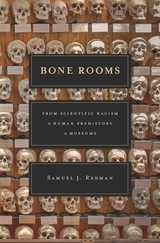 Bone Rooms: From Scientific Racism to Human Prehistory in Museums
Samuel J. Redman
Harvard University Press, 2016 A Smithsonian Book of the Year
A Nature Book of the Year
“Provides much-needed foundation of the relationship between museums and Native Americans.”
—Smithsonian
In 1864 a US Army doctor dug up the remains of a Dakota man who had been killed in Minnesota and sent the skeleton to a museum in Washington that was collecting human remains for research. In the “bone rooms” of the Smithsonian, a scientific revolution was unfolding that would change our understanding of the human body, race, and prehistory.
Seeking evidence to support new theories of racial classification, collectors embarked on a global competition to recover the best specimens of skeletons, mummies, and fossils. As the study of these discoveries discredited racial theory, new ideas emerging in the budding field of anthropology displaced race as the main motive for building bone rooms. Today, as a new generation seeks to learn about the indigenous past, momentum is building to return objects of spiritual significance to native peoples.
“A beautifully written, meticulously documented analysis of [this] little-known history.”
—Brian Fagan, Current World Archeology
“How did our museums become great storehouses of human remains? Bone Rooms chases answers…through shifting ideas about race, anatomy, anthropology, and archaeology and helps explain recent ethical standards for the collection and display of human dead.”
—Ann Fabian, author of The Skull Collectors
“Details the nascent views of racial science that evolved in U.S. natural history, anthropological, and medical museums…Redman effectively portrays the remarkable personalities behind [these debates]…pitting the prickly Aleš Hrdlička at the Smithsonian…against ally-turned-rival Franz Boas at the American Museum of Natural History.”
—David Hurst Thomas, Nature
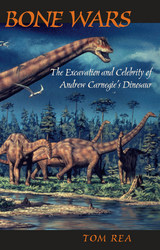 Bone Wars: The Excavation and Celebrity of Andrew Carnegie's Dinosaur
Tom Rea
University of Pittsburgh Press, 2004 Winner of the 2002 Spur Award for Best Western Nonfiction - Contemporary
Less than one hundred years ago, Diplodocus carnegii—named after industrialist and philanthropist Andrew Carnegie—was the most famous dinosaur on the planet. The most complete fossil skeleton unearthed to date, and one of the largest dinosaurs ever discovered, Diplodocus was displayed in a dozen museums around the world and viewed by millions of people.
Bone Wars explains how a fossil unearthed in the badlands of Wyoming in 1899 helped give birth to the public’s fascination with prehistoric beasts. Rea also traces the evolution of scientific thought regarding dinosaurs, and reveals the double-crosses and behind-the-scenes deals that marked the early years of bone hunting.
With the help of letters found in scattered archives, Tom Rea recreates a remarkable story of hubris, hope, and turn-of-the-century science. He focuses on the roles of five men: Wyoming fossil hunter Bill Reed; paleontologists Jacob Wortman—in charge of the expedition that discovered Mr. Carnegie’s dinosaur—and John Bell Hatcher; William Holland, imperious director of the recently founded Carnegie Museum; and Carnegie himself, smitten with the colossal animals after reading a newspaper story in the New York Journal and Advertiser.
What emerges is the picture of an era reminiscent of today: technology advancing by leaps and bounds; the press happy to sensationalize anything that turned up; huge amounts of capital ending up in the hands of a small number of people; and some devoted individuals placing honest research above personal gain.
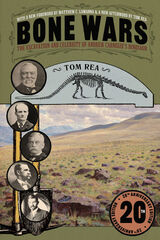 Bone Wars: The Excavation and Celebrity of Andrew Carnegie's Dinosaur, Twentieth Anniversary Edition
Tom Rea
University of Pittsburgh Press, 2021 With a New Foreword by Matthew C. Lamanna and a New Afterword by Tom Rea
Less than one hundred years ago, Diplodocus carnegii—named after industrialist and philanthropist Andrew Carnegie—was the most famous dinosaur on the planet. The most complete fossil skeleton unearthed to date, and one of the largest dinosaurs ever discovered, Diplodocus was displayed in a dozen museums around the world and viewed by millions of people. Bone Wars explains how a fossil unearthed in the badlands of Wyoming in 1899 helped give birth to the public’s fascination with prehistoric beasts. Rea also traces the evolution of scientific thought regarding dinosaurs and reveals the double-crosses and behind-the-scenes deals that marked the early years of bone hunting. With the help of letters found in scattered archives, Tom Rea recreates a remarkable story of hubris, hope, and turn-of-the-century science. He focuses on the roles of five men: Wyoming fossil hunter Bill Reed; paleontologists Jacob Wortman—in charge of the expedition that discovered Carnegie’s dinosaur—and John Bell Hatcher; William Holland, imperious director of the recently founded Carnegie Museum; and Carnegie himself, smitten with the colossal animals after reading a story in the New York Journal and Advertiser. What emerges is the picture of an era reminiscent of today: technology advancing by leaps and bounds; the press happy to sensationalize anything that turned up; huge amounts of capital ending up in the hands of a small number of people; and some devoted individuals placing honest research above personal gain.
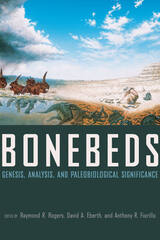 Bonebeds: Genesis, Analysis, and Paleobiological Significance
Edited by Raymond R. Rogers, David A. Eberth, and Anthony R. Fiorillo
University of Chicago Press, 2007 The vertebrate fossil record extends back more than 500 million years, and bonebeds—localized concentrations of the skeletal remains of vertebrate animals—help unlock the secrets of this long history. Often spectacularly preserved, bonebeds—both modern and ancient—can reveal more about life histories, ecological associations, and preservation patterns than any single skeleton or bone. For this reason, bonebeds are frequently studied by paleobiologists, geologists, and archeologists seeking to piece together the vertebrate record.
Thirteen respected researchers combine their experiences in Bonebeds, providing readers with workable definitions, theoretical frameworks, and a compendium of modern techniques in bonebed data collection and analysis. By addressing the historical, theoretical, and practical aspects of bonebed research, this edited volume—the first of its kind—provides the background and methods that students and professionals need to explore and understand these fantastic records of ancient life and death.
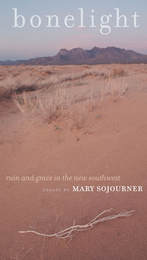 Bonelight: Ruin And Grace In The New Southwest
Mary Sojourner
University of Nevada Press, 2004 When upstate New Yorker Mary Sojourner reluctantly agreed to visit the Grand Canyon of Arizona, she little suspected that she was about to lose her heart to the beauty of the Southwest, or that she would shortly find a passion for the land, and a cause in protecting it. She has since gained notoriety as an environmental writer and as a grass-roots activist protesting the heedless development of the Southwest's increasingly precious and embattled open spaces. The essays collected here reflect Sojourner's journey from greenhorn to old-timer, from tourist to committed defender of the land and the human communities that share it. She writes of exploring the deserts, forests, mountains, and river rapids of the Southwest, and of her love for this austere and ravishing landscape; of family, friends, and lovers; of the ways that development is destroying the Southwest's fragile beauty; and of the greed and spiritual emptiness that motivate much of this development. There is humor here, and adventure, and the intensity of a writer who confronts the world around her with bold candor and a lover's tender gaze.
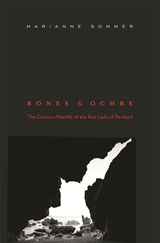 Bones and Ochre: The Curious Afterlife of the Red Lady of Paviland
Marianne Sommer
Harvard University Press, 2007 Marianne Sommer unravels a riveting tale about a set of ancient human bones and their curious afterlife as a scientific object.
When the ochre-stained bones were unearthed in a Welsh cave in 1823, they inspired unsettling questions regarding their origin. Their discoverer, William Buckland, declared the remains to be Post-Diluvian, possibly those of a taxman murdered by smugglers. Shortly thereafter he reinterpreted the bones as those of a female fortune-teller in Roman Britain--and so began the casting and recasting of the Red Lady. Anthropologist William Sollas re-excavated Paviland Cave, applying methods and theories not available to Buckland some ninety years earlier, and concluded that the skeleton was male and Cro-Magnon. Recently, an interdisciplinary team excavated the cave and reinterpreted its contents. Despite their "definitive report" in 2000, Sommer suggests this latest project still hasn't solved the mystery of the Red Lady. Rather, the Red Lady, now a shaman and icon of Welsh ancient history, continues to be implicated in questions of scientific and political authority.
The biography of the Red Lady reflects the personal, professional, and national ambitions of those who studied her and echoes the era in which the research was conducted. In Bones and Ochre, Sommer reveals how paleoanthropology has emerged as an international, interdisciplinary, modern science.
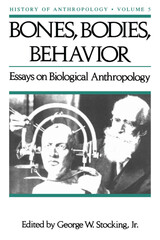 Bones, Bodies amd Behavior: Essays in Behavioral Anthropology
Edited by George W. Stocking, Jr.
University of Wisconsin Press, 1990 History of Anthropology is a series of annual volumes, inaugurated in 1983, each broadly unified around a theme of major importance to both the history and the present practice of anthropological inquiry. Bones, Bodies, Behavior, the fifth in the series, treats a number of issues relating to the history of biological or physical anthropology: the application of the "race" idea to humankind, the comparison of animals minds to those of humans, the evolution of humans from primate forms, and the relation of science to racial ideology. Following an introductory overview of biological anthropology in Western tradition, the seven essays focus on a series of particular historical episodes from 1830 to 1980: the emergence of the race idea in restoration France, the comparative psychological thought of the American ethnologist Lewis Henry Morgan, the archeological background of the forgery of the remains "discovered" at Piltdown in 1912, their impact on paleoanthropology in the interwar period, the background and development of physical anthropology in Nazi Germany, and the attempts of Franx Boas and others to organize a consensus against racialism among British and American scientists in the late 1930s. The volume concludes with a provocative essay on physical anthropology and primate studies in the United States in the years since such a consensus was established by the UNESCO "Statements on Race" of 1950 and 1951. Bringing together the contributions of a physical anthropologist (Frank Spencer), a historical sociologist (Michael Hammond), and a number of historians of science (Elazar Barkan, Claude Blanckaert, Donna Haraway, Robert Proctor, and Marc Swetlitz), this volume will appeal to a wide range of students, scholars, and general readers interested in the place of biological assumptions in the modern anthropological tradition, in the biological bases of human behavior, in racial ideologies, and in the development of the modern human sciences.
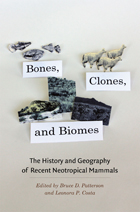 Bones, Clones, and Biomes: The History and Geography of Recent Neotropical Mammals
Edited by Bruce D. Patterson and Leonora P. Costa
University of Chicago Press, 2012 As explorers and scientists have known for decades, the Neotropics harbor a fantastic array of our planet’s mammalian diversity, from capybaras and capuchins to maned wolves and mouse opossums to sloths and sakis. This biological bounty can be attributed partly to the striking diversity of Neotropical landscapes and climates and partly to a series of continental connections that permitted intermittent faunal exchanges with Africa, Antarctica, Australia, and North America. Thus, to comprehend the development of modern Neotropical mammal faunas requires not only mastery of the Neotropics’ substantial diversity, but also knowledge of mammalian lineages and landscapes dating back to the Mesozoic.
Bones, Clones, and Biomes offers just that—an exploration of the development and relationships of the modern mammal fauna through a series of studies that encompass the last 100 million years and both Central and South America. This work serves as a complement to more taxonomically driven works, providing for readers the long geologic and biogeographic contexts that undergird the abundance and diversity of Neotropical mammals. Rather than documenting diversity or distribution, this collection traverses the patterns that the distributions and relationships across mammal species convey, bringing together for the first time geology, paleobiology, systematics, mammalogy, and biogeography. Of critical importance is the book’s utility for current conservation and management programs, part of a rapidly rising conservation paleobiology initiative.
Bones from Awatovi, Northeastern Arizona
Stanley J. Olsen and Richard Page Wheeler
Harvard University Press, 1978 Bones from Awatovi contains a detailed analysis of the massive collection of both the faunal remains and the bone/antler artifacts recovered from the site of Awatovi.
Unique in its size and degree of preservation, the Awatovi faunal collection provides rich ground for analysis and interpretation. Olsen and Wheeler deliver an in-depth examination which is of interest to archaeologists and faunal analysts alike.
The Bones of Bascom Hall
Betsy Draine and Michael Hinden
University of Wisconsin Press, 2024 Campus police at the University of Wisconsin–Madison are baffled by the discovery of human remains in the attic of the administration building. Drawn into the investigation, visiting professor Nora Barnes connects the bones to the Vietnam-era bombing of Sterling Hall. But someone doesn’t want her probing the past. She’s side-swiped by a car while riding a bicycle and almost crushed in the art library’s motorized book stacks. Meanwhile, her high-spirited husband, Toby Sandler, is hot on the trail of lost architectural plans drafted by Frank Lloyd Wright.
Inspired by an event that traumatized Madison and shocked the nation, this absorbing novel blends fact and fiction and is sure to delight both mystery enthusiasts and UW alumni.
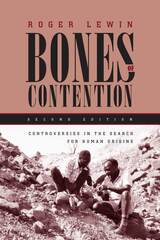 Bones of Contention: Controversies in the Search for Human Origins
Roger Lewin
University of Chicago Press, 1997 Bones of Contention is a behind-the-scenes look at the search for human origins. Analyzing how the biases and preconceptions of paleoanthropologists shaped their work, Roger Lewin's detective stories about the discovery of Neanderthal Man, the Taung Child, Lucy, and other major fossils provide insight into this most subjective of scientific endeavors. The new afterword looks at ways in which paleoanthropology, while becoming more scientific
in many ways, remains contentious.
"[An] un-put-downable book."—John Gribbon, Times Educational Supplement
"Not just another 'stones and bones' account of human evolution. It is Lewin's thesis, amply demonstrated, that paleoanthropology is the most subjective of sciences because it engages the emotions of virtually everyone; and since the evidence is scrappy, interpretation is everything. . . . A splendid, stirring, and eye-opening account, to be devoured."—Kirkus Reviews, starred review
"[Lewin shows] 'how very unscientific the process of scientific inquiry can be.'. . . Bones of Contention is . . . serious intellectual history."—Edward Dolnick, Wall Street Journal
"[Lewin] documents his thesis in persuasive detail. . . . The reader is carried along by the power of Mr. Lewin's reporting."—Robert Wright, New York Times Book Review
 Bones of Contention: The living archive of Vasil Levski and the making of Bulgaria's national hero
Maria Todorova
Central European University Press, 2009 This book is about documenting and analyzing the living archive around the figure of Vasil Levski (1837–1873), arguably the major and only uncontested hero of the Bulgarian national pantheon. The processes described, although with a chronological depth of almost two centuries, are still very much in the making, and the living archive expands not only in size but constantly adding surprising new forms. The monograph is a historical study, taking as its narrative focus the life, death and posthumous fate of Levski. By exploring the vicissitudes of his heroicization, glorification, appropriations, reinterpretation, commemoration and, finally, canonization, it seeks to engage in several broad theoretical debates, and provide the basis for subsequent regional comparative research. The analysis of Levski's consecutive and simultaneous appropriations by different social platforms, political parties, secular and religious institutions, ideologies, professional groups, and individuals, demonstrates how boundaries within the framework of the nation are negotiated around accepted national symbols.
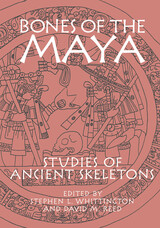 Bones of the Maya: Studies of Ancient Skeletons
Edited by Stephen L. Whittington and David M. Reed
University of Alabama Press, 2006 Brings together for the first time a broad spectrum of bioarchaeologists and reveals remarkable data on Maya genetic relationship, demographic, and diseases
New techniques in osteology have yielded findings on Maya diet and health that challenge the ecological model of collapse. This benchmark collection of essays defined the state of Mayan skeletal studies. Its coverage spans the formative through colonial periods, with a geographic focus on the Maya lowlands of northern Guatemala, Belize, and western Honduras. Bringing together for the first time a broad spectrum of bioarchaeologists and revealing remarkable data on Maya genetic relationship, demographic, and diseases, the collection covers divers topics such as osteological, dental, bone chemistry, and DNA analyses. The diet and health status of Maya populations is a major theme, especially in relation to social status, gender, and the historical problem of the "collapse."
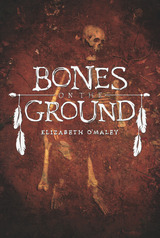 Bones on the Ground
Elizabeth O'Maley
Indiana Historical Society Press, 2014 What happened to the Indians of the Old Northwest Territory? Conflicting portraits emerge and answers often depend on who’s telling the story, with each participant bending and stretching the truth to fit their own view of themselves and the world. This volume presents biographical sketches and first-person narratives of Native Americans, Indian traders, Colonial and American leaders, and events that shaped the Indians’ struggle to maintain possession of their tribal lands in the face of the widespread advancement of white settlement.
It covers events and people in the Old Northwest Territory from before the American Revolution through the removal of the Miami from Indiana in 1846. As America’s Indian policy was formed, and often enforced by the U.S. military, and white settlers pushed farther west, some Indians fought the white intruders, while others adopted their ways. In the end, most Indians were unable to hold their ground, and the evidence of their presence now lingers only in found relics and strange-sounding place names.
Bones Will Crow: An Anthology of Burmese Poetry
James Byrne
Northern Illinois University Press, 2013
This is the first anthology of contemporary Burmese poets published in the United States and it includes the work of Burmese poets who have been in exile and in prison. The poems include global references from a culture in which foreign books and the Internet are regarded with suspicion and where censorship is an industry. The poets have been ingenious in their use of metaphor to escape surveillance and censorship, writing post-modern, avant-garde, performance, and online poetries.
The anthology reveals the transition of Burmese poetry from traditionalism to modernism, as well as the development of Burmese poetry over the second half of the twentieth century, as Myanmar has changed. Through their wildly diverse styles, these poems delight in the freedom to experiment with poetic tradition.
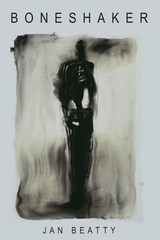 Boneshaker
Jan Beatty
University of Pittsburgh Press, 2002 "Language that's often raw but honest, fresh and real (not to mention quite beautiful at times). . . . Buy it." --Pittsburgh Magazine
"[Beatty's] writing style . . . reflects a down-to-earth woman concerned with humanity." --City Paper
"'Wild girl fire' is what Jan Beatty calls it, 'that white-hot tearing' that ignites into art or self-destruction. Poetry against all odds. Poetry as the death-defying act. Poetry as the wild choice for a girl running reckless from the working class. Between odd jobs and odd loves, Beatty writes from the tender heart without flinching." --Sandra Cisneros
"What is the body? In Jan Beatty's courageous, beautiful, and harsh new book, Boneshaker, the body is as horrifyingly without boundaries as the cosmos, as constricted as a prison cell. Language, too, is a body. At times it is stitched up tight in the strictures of narrative. . . . At other times, chopped and opened up, not even a sentence survives intact. Restless with complacency and restriction, this book riccochets among a multitude of forms, tones, subjects. Boneshaker is a fierce, intelligent, terrifying interrogation of categories, among them the category of the book itself. Nothing is beyond the reach of this splendid new work." --Lynn Emanuel
"This is slap in the face, wake the fuck up and smell the roses poetry. This is pay attention Bub, or you'll be in a jam poetry; poetry written in defiance of gravity and in the face of all the forces of our own desire that want to drag us down. And underneath all of this wildness is a true love and care for craft, and the anxious, bluesy rhythm of good talk, like a river." --Bruce Weigl
"There is a school of poetry where the poems have content, where they communicate, where beauty is not forgotten. It is about work, family, and the lost towns. Grief. Jan is a central figure in this school." ---Gerald Stern
In hard-hitting, sophisticated, often lyrical language, Jan Beatty investigates the idea of the body as cultural machine, shelter, mirage, or home. She rescripts the birth scene with girders and industrial pulleys; the womb as inhabited by a young girl architect. Structurally adventurous, the poems in Boneshaker question icons and invoke taboos, connect desire with place and class, walk the tightrope between sex and love.
Jan Beatty's first book, Mad River, won the 1994 Agnes Lynch Starrett Poetry Prize. Her collection Ravenous won the 1995 State Street Chapbook Prize. She has been published in Indiana Review, Witness, The Journal, Crab Orchard Review, and various anthologies. A resident of Pittsburgh, she is the host and producer of "Prosody," a weekly radio program featuring the work of national writers.
Boneyard Heresies: Poetry
Tina Schumann
Moon City, 2025 Boneyard Heresies, Tina Schumann’s forth poetry collection. is an investigation of personhood as seen through the prisms of magical thinking, grief, the dreamland of memory, and the vagaries of love. These often self-deprecating and at times darkly humorous inquiries are built around a scaffolding of self-portraits, epistles, and elegies. Ultimately, the collection explores the inevitable terminus of all living things, the ironic and faulty constructs of a rapidly moving world, and one’s place in the human tribe.
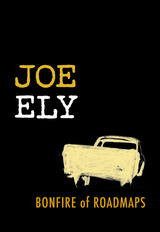 Bonfire of Roadmaps
By Joe Ely
University of Texas Press, 2007 Since he first hitched a ride out of Lubbock, Texas, at the age of sixteen, singer-songwriter and Flatlanders band member Joe Ely has been a road warrior, traveling highways and back roads across America and Europe, playing music for "2 hours of ecstasy" out of "22 hours of misery." To stay sane on the road, Ely keeps a journal, penning verses that sometimes morph into songs, and other times remain "snapshots of what was flying by, just out of reach, so to savor at a later date when the wheels stop rolling, and the gears quit grinding, and the engines shut down." In Bonfire of Roadmaps, Ely takes readers on the road with him. Using verse passages from his road journals and his own drawings, Ely authentically re-creates the experience of a musician's life on tour, from the hard goodbyes at home, to the long hours on the road, to the exhilaration of a great live show, to the exhaustion after weeks of touring. Ely's road trips begin as he rides the rails to Manhattan in 1972 and continue up through recent concert tours with fellow Flatlanders Jimmie Dale Gilmore and Butch Hancock. While acknowledging that "it is not the nature of a gypsy to look in the rearview mirror," Joe Ely nevertheless offers his many fans a revelatory look back over the roads he's traveled and the wisdom he's won from his experiences. And for "those who want to venture beyond the horizon just to see what is there... to those, I hope these accounts will give a glint of inspiration..."
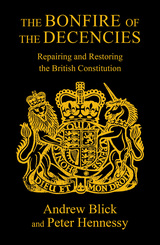 The Bonfire of The Decencies: Repairing and Restoring the British Constitution
Peter Hennessy and Andrew Blick
Haus Publishing, 2022 A reflection on the state of democracy and observance of the British constitution in the United Kingdom.
In The Bonfire of the Decencies, Peter Hennessy and Andrew Blick use Boris Johnson’s tenure as prime minister to argue that mechanisms for the upholding of constitutional principles in the United Kingdom are deficient and require an overhaul. They show that, from the outset, Johnson’s time in office was a source of serious disruption that saw standards and integrity compromised, as well as constitutional values violated. Those problems, however, did not end with Johnson’s removal from office. Rather, they are part of longer-term tendencies in the UK, and of a worrying international trend towards the weakening of democracy. Hennessy and Blick analyze the pre-existing vulnerabilities that Johnson exposed in the UK system of government and conclude with a series of proposals to repair the damage and prevent a repetition of this anxious episode in the UK’s political history.
Bonfire Opera: Poems
Danusha Laméris
University of Pittsburgh Press, 2020
Winner, 2021 Northern California Book Award
Finalist, 2021 Patterson Poetry Prize
Sometimes the most compelling landscapes are the ones where worlds collide: where a desert meets the sea, a civilization, no-man’s land. Here in Bonfire Opera, grief and Eros grapple in the same domain. A bullet-hole through the heart, a house full of ripe persimmons, a ghost in a garden. Coyotes cry out on the hill, and lovers find themselves kissing, “bee-stung, drunk” in the middle of road. Here, the dust is holy, as is the dark, unknown. These are poems that praise the impossible, wild world, finding beauty in its wake.
Bong Hits 4 Jesus: A Perfect Constitutional Storm in Alaska's Capital
James C. Foster
University of Alaska Press, 2010 In January 2002, for the first time, the Olympic Torch Relay visited Alaska on its way to the Winter Games. When the relay runner and accompanying camera cars passed Juneau-Douglas High School, senior Joseph Frederick and several friends unfurled a fourteen-foot banner reading "BONG HiTS 4 JESUS." An in-depth look at student rights within a public high school, this book chronicles the events that followed: Frederick's suspension, the subsequent suit against the school district, and, ultimately, the escalation of a local conflict into a federal case. Brought to life through interviews with the principal figures in the case, Bong Hits 4 Jesus is a gripping tale of the boundaries of free speech in an American high school.
Bong Joon Ho
Joseph Jonghyun Jeon
University of Illinois Press, 2024 Successful cult films like The Host and Snowpiercer proved to be harbingers for Bong Joon Ho’s enormous breakthrough success with Parasite. Joseph Jonghyun Jeon provides a consideration of the director’s entire career and the themes, ambitions, techniques, and preoccupations that infuse his works. As Jeon shows, Bong’s sense of spatial and temporal dislocations creates a hall of mirrors that challenges us to answer the parallel questions Where are we? and When are we?. Jeon also traces Bong’s oeuvre from its early focus on Korea’s US-fueled modernization to examining the entanglements of globalization in Mother and his subsequent films. A complete filmography and in-depth interview with the director round out the book. Insightful and engaging, Bong Joon Ho offers an up-to-date analysis of the genre-bending international director.
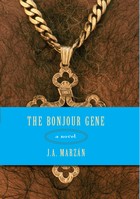 The Bonjour Gene: A Novel
J. A. Marzán; Introduction by David Huddle
University of Wisconsin Press, 2005 Edgar Bonjour, at middle age and after rising to a suburban family life, starts drug-trafficking with a motorcycle gang from his old South Bronx neighborhood and ends up dead. The published news of his murder sets the stage for introspection among other Bonjours, even those who did not know him, who interpret his returning to the past by way of a young woman gang member as the work of their family curse.
Descended from three French brothers who settled in Puerto Rico, Bonjours now belong to extended branches, some settled in New York City. Removed in varying degrees, all remain connected by the lore that only one island family possesses their surname, and that starting with the three brothers—sowers of a legacy of adultery and abandonment—every Bonjour male carries a reckless, womanizing gene.
Lineage and legend of lineage haunt but do not make these lives predictable. So Daisy, who hardly knew her father and has passed her prime without much interest in marriage, secretly falls in love with the man who paid her to marry him so he could get a green card. Ten-year-old Marco does not know what the reader does: that his visiting, divorced Bonjour father is gay. Recently married Gabriel, having flown to Puerto Rico to bury a father who intermittently entered his life, meets an African American down from Georgia, whom he learns is his embittered brother, and his beautiful stepsister, with whom he faces the same temptation that sidetracked his father.
Interconnected like his Bonjour families, these stories of unpredictable and unforgettable characters will transport the reader to a plane where ethnicity becomes universality.
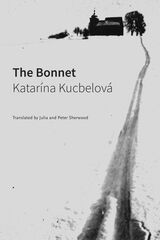 The Bonnet
Katari´na Kucbelova´
Seagull Books, 2024 A beautifully written and moving story about the power of tradition and the importance of women’s stories.
The Bonnet, the first work of prose by Slovak poet Katarína Kucbelová, defies easy pigeonholing: both political and personal, it is a work of literary reportage, a quest for one’s roots, a critical exploration of folk art and, not least, social commentary on the coexistence of the Slovak majority and the Roma minority, offering a nuanced and sympathetic look at the lives of Roma people in Slovakia, and raising important questions about the nature of prejudice and discrimination. Over two years, the author made regular visits to the remote village of Šumiac in Slovakia to learn the dying craft of bonnet making from one of its last practitioners, Il’ka, an elderly local woman who in the process became her mentor in more ways than one. Through the parallel stories of Il’ka and the narrator’s grandmother, The Bonnet also offers a subtly feminist reading of the position of women in rural Europe from the early twentieth century to the present day.
The Boo Baby Girl: Meets the Ghost of Mable's Gable
Jim May
Parkhurst Brothers, Inc., 2014 Horror overcome by humor in a classic tale retold by a modern storyteller
Something of a quest story for the picture book set, this playful horror tale sets young protagonists against “the Ghost of of Mable’s Gable.” In Jim May’s version of a story from children’s folklore, eighth grade boys swagger but fail, only to be followed by outdone by an unlikely heroine, “the Boo Baby Girl,” a toddler who will not be denied.
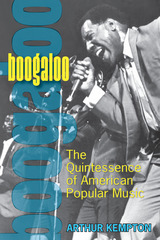 Boogaloo: The Quintessence of American Popular Music
Arthur Kempton
University of Michigan Press, 2005 The much-anticipated paperback edition of Arthur Kempton's story on the art, influence, and commerce of Black American popular music
Praise for Boogaloo:
"From Thomas A. Dorsey and gospel to Sam Cooke and the classic age of boogaloo ('soul') to George Clinton and hip hop, this comprehensive analysis of African-American popular music is a deep and gorgeous meditation on its aesthetics and business."
---Henry Louis Gates, Jr., W.E.B. Du Bois Professor of the Humanities, Harvard
"Surpassingly sympathetic and probing. . . . a panoramic critical survey of black popular music over seventy-five years. . . .There is no book quite like it."
---New York Review of Books
". . . moving, dense, and fascinating. . . ."
---New Yorker
". . . a grand and sweeping survey of the history of soul music in America. . . . one of the best books of music journalism. . . ."
---Publisher's Weekly
". . . a fascinating and often original addition to the extensive literature. . . . an astute and witty account. . . . there is plenty in Boogaloo to set the mind and heart alight, as well as some flashes of brilliance and originality rare in music writing today."
---Times Literary Supplement
A BOOK ABOUT DYING: PREPARING FOR ETERNAL LIFE
Robert Kirven
Swedenborg Foundation Publishers, 1997
Composed at a time when Robert H. Kirven was coping with the terminal illness of his wife, A Book about Dying affirms that the universal fear of death is eased by knowing what comes after. Using the unique Swedenborgian perspective of the afterlife and his own hard-earned knowledge of the day-to-day realities of caring for a loved one, Kirven writes of the spiritual experiences of the dying and of the survivors; offers practical advice on measure that can lessen the burden on the sick and the caregiver; and convincingly asserts that "for patient and survivor alike, living really does continue after dying."
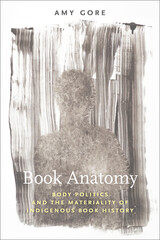 Book Anatomy: Body Politics and the Materiality of Indigenous Book History
Amy Gore
University of Massachusetts Press, 2023 From the marginalia of their readers to the social and cultural means of their production, books bear the imprint of our humanity. Embodying the marks, traces, and scars of colonial survival, Indigenous books are contested spaces. A constellation of nontextual components surrounded Native American–authored publications of the long nineteenth century, shaping how these books were read and understood—including illustrations, typefaces, explanatory prefaces, appendices, copyright statements, author portraits, and more. Centering Indigenous writers, Book Anatomy explores works from John Rollin Ridge, Sarah Winnemucca Hopkins, Pretty Shield, and D’Arcy McNickle published between 1854 and 1936. In examining critical moments of junction between Indigenous books and a mainstream literary marketplace, Amy Gore argues that the reprints, editions, and paratextual elements of Indigenous books matter: they embody a frontline of colonization in which Native authors battle the public perception and reception of Indigenous books, negotiate representations of Indigenous bodies, and fight for authority and ownership over their literary work.
 Book and Verse: A Guide to Middle English Biblical Literature
James H. Morey
University of Illinois Press, 2000 Exploding the myth that the Bible was largely unknown to medieval lay folk, Book and Verse presents the first comprehensive catalog of Middle English biblical literature: a body of work that, because of its accessibility and familiarity, was the primary biblical resource of the English Middle Ages. The medieval Bible, much like the Bible today, consists in practical terms not of a set of texts within a canon but of those stories which, because of a combination of liturgical significance and picturesque qualities, form a provisional "Bible" in the popular imagination. As James Morey explains in his introduction, although the Latin Bible was not accessible to the average English-speaker, paraphrases— systematic appropriation and refashioning of biblical texts—served as a medium through which the Bible was promulgated in the vernacular. This explains why biblical allusions, models, and large-scale appropriations of biblical narrative pervade nearly every medieval genre.
Book and Verse is an indispensable guide to the variety and extent of biblical literature in England, exclusive of drama and the Wycliffite Bible that appeared between the twelfth and the fifteenth centuries. Entries provide detailed information on how much of what parts of the Bible appear in Middle English and where this biblical material can be found. Comprehensive indexing by name, keyword, and biblical verse allows a researcher to find, for example, all the occurrences of the Flood Story or of the encounter between Elijah and the Widow of Sarephta. An invaluable resource, Book and Verse provides the first easy access to the "popular Bible" assembled before and after John Wyclif's translation of the Vulgate into English.
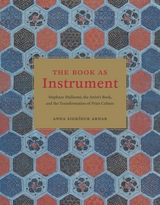 The Book as Instrument: Stéphane Mallarmé, the Artist's Book, and the Transformation of Print Culture
Anna Sigrídur Arnar
University of Chicago Press, 2011 Stéphane Mallarmé (1842–98) was a French Symbolist poet, theorist, and teacher whose ideas and legendary salons set the stage for twentieth-century experimentation in poetry, music, theater and art. A canonical figure in the legacy of modernism, Mallarmé was also a lifelong champion of the book as both a literary endeavor and a carefully crafted material object.
In The Book as Instrument, Anna Sigrídur Arnar explores how this object functioned for Mallarmé and his artistic circle, arguing that the book became a strategic site for encouraging a modern public to actively partake in the creative act, an idea that informed later twentieth-century developments such as conceptual and performance art. Arnar demonstrates that Mallarmé was invested in creating radically empowering reading experiences, and the diverse modalities he proposed for both reading and looking anticipate interactive media prevalent in today’s culture. In describing the world of books, visual culture, and mass media of the late nineteenth century, Arnar touches upon an array of themes that continues to preoccupy us in our own moment, including speculations on the future of the book. Enhanced by gorgeous illustrations, The Book as Instrument is sure to fascinate anyone interested in the ever-vibrant experiment between word and image that makes the page and the multi-sensory pleasures of reading.
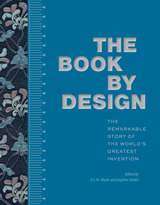 The Book by Design: The Remarkable Story of the World's Greatest Invention
Edited by P.J.M. Marks and Stephen Parkin
University of Chicago Press, 2023 A richly illustrated look at some of the British Library’s most beautiful books from around the world.
For centuries across the world, books have been created as objects of beauty, with bookmakers lavishing great care on their paper, binding materials, illustrations, and lettering.
The Book by Design, featuring an array of books from the British Library's collection, focuses on the sensory experience of holding and reading these objects. Each selection represents a specific moment in the development of what we know today as the book—from scrolls and bound illuminated manuscripts to paperbacks and formatted digital information. These range from the seventh century to the present and include examples from China, Japan, Southeast Asia, the Middle East, Europe, and North America, in addition to a look at book traditions in Africa and Oceania. John James Audubon’s Birds of America, the works of Chaucer, Russian Futurist books, limited editions, historic copies of the Qur’an and the Bible, mass-market paperbacks, and more come together to tell the visual, tactile, artistic, and cultural history of books.
Expert curators and specialists explore these books from the perspective of design and manufacturing, original art photographs offer vivid representations of their textures and materials, and graphics detail the size and specifications of each book. Offering a wide-ranging look at the creation and use of books, illustrated with hundreds of color images, this volume is itself an object of beauty.
Book Clubs: Women and the Uses of Reading in Everyday Life
Elizabeth Long
University of Chicago Press, 2003 Book clubs are everywhere these days. And women talk about the clubs they belong to with surprising emotion. But why are the clubs so important to them? And what do the women discuss when they meet? To answer questions like these, Elizabeth Long spent years observing and participating in women's book clubs and interviewing members from different discussion groups. Far from being an isolated activity, she finds reading for club members to be an active and social pursuit, a crucial way for women to reflect creatively on the meaning of their lives and their place in the social order.
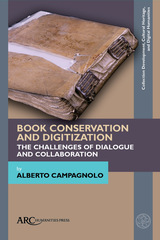 Book Conservation and Digitization: The Challenges of Dialogue and Collaboration
Alberto Campagnolo
Arc Humanities Press, 2024
The successful transmediation of books and documents through digitization requires the synergetic partnership of many professional figures, that have what may sometimes appear as contrasting goals at heart. On one side, there are those who look after the physical objects and strive to preserve them for future generations, and on the other those involved in the digitization of the objects, the information that they contain, and the management of the digital data. These complementary activities are generally considered as separate and when the current literature addresses both fields, it does so strictly within technical reports and guidelines, concentrating on procedures and optimal workflow, standards, and technical metadata. In particular, more often than not, conservation is presented as ancillary to digitization, with the role of the conservator restricted to the preparation of items for scanning, with no input into the digital product, leading to misunderstanding and clashes of interests. Surveying a variety of projects and approaches to the challenging conservation-digitization balance and fostering a dialogue amongst practitioners, this book aims at demonstrating that a dialogue between apparently contrasting fields not only is possible, but it is in fact desirable and fruitful. Only through the synergetic collaboration of all people involved in the digitization process, conservators included, can cultural digital objects that represent more fully the original objects and their materiality be generated, encouraging and enabling new research and widening the horizons of scholarship.
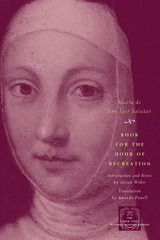 Book for the Hour of Recreation
María de San José Salazar
University of Chicago Press, 2002 María de San José Salazar (1548-1603) took the veil as a Discalced ("barefoot") Carmelite nun in 1571, becoming one of Teresa of Avila's most important collaborators in religious reform and serving as prioress of the Seville and Lisbon convents. Within the parameters of the strict Catholic Reformation in Spain, María fiercely defended women's rights to define their own spiritual experience and to teach, inspire, and lead other women in reforming their church.
María wrote this book as a defense of the Discalced practice of setting aside two hours each day for conversation, music, and staging of religious plays. Casting the book in the form of a dialogue, María demonstrates through fictional conversations among a group of nuns during their hours of recreation how women could serve as very effective spiritual teachers for each other. The book includes one of the first biographical portraits of Teresa and Maria's personal account of the troubled founding of the Discalced convent at Seville, as well as her tribulations as an Inquisitional suspect. Rich in allusions to women's affective relationships in the early modern convent, Book for the Hour of Recreation also serves as an example of how a woman might write when relatively free of clerical censorship and expectations.
A detailed introduction and notes by Alison Weber provide historical and biographical context for Amanda Powell's fluid translation.
The Book in Movement: Autonomous Politics and the Lettered City Underground
Magali Rabasa
University of Pittsburgh Press, 2019 Over the past two decades, Latin America has seen an explosion of experiments with autonomy, as people across the continent express their refusal to be absorbed by the logic and order of neoliberalism. The autonomous movements of the twenty-first century are marked by an unprecedented degree of interconnection, through their use of digital tools and their insistence on the importance of producing knowledge about their practices through strategies of self-representation and grassroots theorization. The Book in Movementexplores the reinvention of a specific form of media: the print book. Magalí Rabasa travels through the political and literary underground of cities in Mexico, Bolivia, Argentina, and Chile to explore the ways that autonomous politics are enacted in the production and circulation of books.
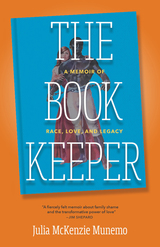 The Book Keeper: A Memoir of Race, Love, and Legacy
Julia McKenzie Munemo
Ohio University Press, 2020 “A fiercely felt memoir about family shame and the transformative power of love even as it’s also an ongoing meditation on privilege and race in twenty-first-century America. This is a debut striking in its empathetic imagination, observational acuity, and emotional intelligence.” — Jim Shepard, author of Like You’d Understand, Anyway. In a memoir that’s equal parts love story, investigation, and racial reckoning, Munemo unravels and interrogates her whiteness, a shocking secret, and her family’s history. When interracial romance novels written by her long-dead father landed on Julia McKenzie Munemo’s kitchen table, she—a white woman—had been married to a black man for six years and their first son was a toddler. Out of shame about her father’s secret career as a writer of “slavery porn,” she hid the books from herself, and from her growing mixed-race family, for more than a decade. But then, with police shootings of African American men more and more in the public eye, she realized that understanding her own legacy was the only way to begin to understand her country.
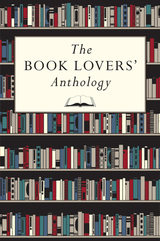 The Book Lovers' Anthology: A Compendium of Writing about Books, Readers and Libraries
Edited by the Bodleian Library
Bodleian Library Publishing, 2014 A blessed companion is a book—a book that, fitly chosen, is a lifelong friend.”—Douglas William Jerrold
“Much reading is like much eating, wholly useless without digestion.”—Robert South
“If I had read as much as other men, I should have been as ignorant as they.” —Thomas Hobbes
Can books corrupt? Do badly written books sharpen or dull the minds of their readers? Ought we to take seriously the old saw that excessive reading can damage one’s sight? The Book Lovers’ Anthology offers answers to these questions and many more with a remarkable collection of reflections on books, readers, and libraries— by writers whose books are among the world’s best known and best loved.
Throughout the centuries, books have been a source of fascination— and sometimes frustration—for writers. Between the covers of the Anthology are excerpts from the novels of Jane Austen, George Eliot, and Jonathan Swift, among many others, all of whom paused in their fiction to extol the virtues of the written page. Those who are taken with the smell of books will find a like mind in Charles Dickens, who waxed poetic about the “pleasant smell of paper freshly pressed.” Very avid readers might even nod in knowing agreement with John Donne, who declared, “I shall die reading.” Other poets whose musings on libraries or books are excerpted for the Anthology include Shakespeare, Wordsworth, Milton, and Chaucer. These writings are interspersed by the meditations of essayists and diarists of centuries past—among them, Samuel Johnson, James Boswell, John Ruskin, and Michel de Montaigne.
With contributions from major writers across ages and genres, this is an essential anthology for which any bibliophile will want to find space on the shelf.
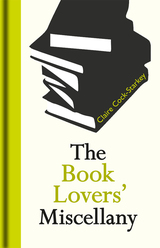 The Book Lovers' Miscellany
Claire Cock-Starkey
Bodleian Library Publishing, 2017 How is ink made? What is the bestselling book of all time? What are the oldest known books in the world? And how does one make sense of the colors found on Penguin paperbacks? The answers to these questions and many more await readers in The Book Lovers’ Miscellany.
The Book Lovers’ Miscellany is a cornucopia for bibliophiles. With customary wisdom and wit, Claire Cock-Starkey presents a brief illustrated history of paper, binding, printing, and dust jackets, with a wealth of arcane facts that even the most avid book lovers may be hard-pressed to answer: Which natural pigments were used to decorate medieval bibles? Which animal is needed for the making of vellum? Curious facts are drawn from throughout the history of books and publishing, including many more recent examples, such as a short history of the comic and the story behind the massively successful Harlequin romance imprint Mills and Boon. Readers can explore the output of the most prolific writers and marvel at the youth of the youngest published authors—or lament the decisions of the publishers who rejected books that later became colossal bestsellers. The book also includes a collection of lists, including unfinished novels, books that have faced bans, books printed with mistakes, the most influential academic books of all time, and the longest established literary families.
The perfect gift for every bibliophile, The Book Lovers’ Miscellany is equally well suited to reading straight through or dipping into here and there.
Book M: A London Widow's Life Writings
Katherine Austen, Edited by Pamela S. Hammons
Iter Press, 2013 This excellent piece of work brings a new and fascinating seventeenth-century voice to twenty-first-century readers interested in women’s studies, literature, and history. Book M by the London widow Katherine Austen lends itself well to modernization, which Professor Hammons has handled in a light and tactful manner. This book will be an excellent choice for classes on life writing in general and on early modern women’s writing in particular, and it will be a great contextual reading for courses on British Restoration culture and literature.
—Margaret J. M. Ezell
Distinguished Professor of English and John and Sara Lindsay Chair of Liberal Arts
Texas A&M University
The Book of a Hundred Hands
Cole Swensen
University of Iowa Press, 2005 The hand is second only to language in defining the human being, and its constant presence makes it a ready reminder of our humanity, with all its privileges and obligations. In this dazzling collection, Cole Swensen explores the hand from any angle approachable by language and art. Her hope: to exhaust the hand as subject matter; her joy: the fact that she couldn’t.
These short poems reveal the hand from a hundred different perspectives. Incorporating sign language, drawing manuals, paintings from the 14th to the 20th century, shadow puppets, imagined histories, positions (the “hand as a boatless sail”), and professions (“the hand as window in which the panes infinitesimal”), Cole Swensen’s fine hand is “that which augments” our understanding and appreciation of “this freak wing,” this “wheel that comforts none” yet remains “a fruit the size and shape of the heart.”
The Book of a Thousand Eyes
Lyn Hejinian
Omnidawn, 2012 Written over the course of two decades, The Book of a Thousand Eyes was begun as an homage to Scheherazade, the heroine of The Arabian Nights who, through her nightly tale-telling, saved her culture and her own life by teaching a powerful and murderous ruler to abandon cruelty in favor of wisdom and benevolence. Hejinian’s book is a compendium of “night works”—lullabies, bedtime stories, insomniac lyrics, nonsensical mumblings, fairy tales, attempts to understand at day’s end some of the day’s events, dream narratives, erotic or occasionally bawdy ditties, etc. The poems explore and play with languages of diverse stages of consciousness and realms of imagination. Though they may not be redemptive in effect, the diverse works that comprise The Book of a Thousand Eyes argue for the possibilities of a merry, pained, celebratory, mournful, stubborn commitment to life.
Book of Abraham Apologetics: A Review and Critique
Dan Vogel
Signature Books, 2021 Said to have been dictated by Joseph Smith as a translation of an ancient Egyptian scroll purchased in Kirtland, Ohio, in 1835, the Book of Abraham may be Mormonism’s most controversial scripture. Decades of impassioned discussion began when about a dozen fragments of Smith’s Egyptian papyri, including a facsimile from the Book of Abraham, were found in the New York Metropolitan Museum in 1966. The discovery solved a mystery about the origin of the Egyptian characters that appear in the various manuscript copies of the Book of Abraham from 1835, reproduced from one of the fragments. Some LDS scholars devised arguments to explain what seemed to be clear evidence of Smith’s inability to translate Egyptian. In this book, Dan Vogel not only highlights the problems with these apologetic arguments but explains the underlying source documents in revealing detail and clarity.
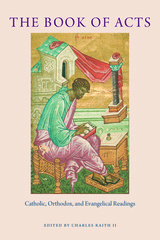 The Book of Acts
Charles Raith II
Catholic University of America Press, 2019 The Book of Acts brings together leading Catholic, Orthodox, and Evangelical theologians to read and interpret the book of Acts from within their ecclesial tradition, while simultaneously engaging one another in critical dialogue. Combining both theological exegesis and ecumenical dialogue, each chapter is uniquely structured to facilitate a rich reading of Scripture and an engaging though critical dialogue across the traditions. Each chapter begins with a main essay by either a Catholic, Orthodox, or Evangelical theologian on a section of the book of Acts; the main essay is followed by responses from theologians of the other two traditions. The chapter concludes with a final response from the main author. Readers are thus provided with not only a deep and engaging reading of the book of Acts but also the unfolding of a rich theological-ecumenical dialogue centered on Scripture. Anyone interested in understanding how our ecclesial traditions inform our reading of Scripture would do well to read this book, as would anyone interested in the book of Acts, ecumenical dialogue, and the theological interpretation of Scripture
The Book of Amos: The JPS Audio Version
JPS: The Jewish Publication Society
Jewish Publication Society, 2009 The audio version of the Book of Amos was created by JPS and JBI. Using the NJPS translation, MD Laufer narrated this book exclusively for The Jewish Publication Society.
 The Book of Apollonius
Translated by Raymond L. Grismer and Elizabeth Atkins
University of Minnesota Press, 1936 The Book of Apollonius was first published in 1936. Minnesota Archive Editions uses digital technology to make long-unavailable books once again accessible, and are published unaltered from the original University of Minnesota Press editions. No other English translation of this famous thirteenth-century Spanish narrative poem is available, in either poetry or prose. The present translators have put it into a form that reproduces most faithfully the quaint and naïve quality of the original Libro de Apolonio, the story of which appears in Book Eight of John Gower's Confessio Amantis and in Shakespeare's Pericles. The reader who is not a specialist in medieval or Spanish literature will find here a lush uncensored tale of mad adventure. If he will give himself up to the spell of its child-like spirit, he will find himself led on through such "faery lands forlorn" as the untrammeled imagination has immemorially loved to create. The story parades before him storms, shipwrecks, kidnappings, pirates, supposed deaths, miraculous escapes and survivals. Beginning in a theme that runs through dramatic literature from Oedipus Rex through The Cenci to The Barretts of Wimpole Street,the plot reveals the misfortunes that furiously pursue Apollonius, king of Tyre, after he tries to woo the daughter of King Antiochus away from her father. Forced to flee for his life, Apollonius plunges from adventure to adventure, until incredible reunions and transports of joy bring the tale to a conventional happy ending. The translators' Introduction gives an account of the use of the Apollonius material in Old French, Provençal, Anglo-Saxon, German, and other literatures, as well as tracing the history of the poem from its source in a lost Greek romance.
Book of Appassionata: The Collected Poems
David Citino
Ohio State University Press, 1998 Sister Mary Appassionata has been talking herself into David Citino's poetry collections for many years. Charming when she wants to be, pushy by nature and by vocation, determined to say what she has to say, Sister Mary has evolved into a recognized literary personality, very popular with readers of Citino's poetry. She has now persuaded both poet and press that she is ready for her own breakthrough book, arguing that everything she has said in the past is still true and that she also has important new observations to make. The Book of Appassionata presents Sister Mary's new poems and brings together in one volume all her poems from Citino's previous collections.
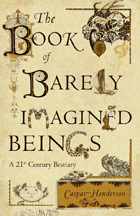 The Book of Barely Imagined Beings: A 21st Century Bestiary
Caspar Henderson
University of Chicago Press, 2013 From medieval bestiaries to Borges’s Book of Imaginary Beings, we’ve long been enchanted by extraordinary animals, be they terrifying three-headed dogs or asps impervious to a snake charmer’s song. But bestiaries are more than just zany zoology—they are artful attempts to convey broader beliefs about human beings and the natural order. Today, we no longer fear sea monsters or banshees. But from the infamous honey badger to the giant squid, animals continue to captivate us with the things they can do and the things they cannot, what we know about them and what we don’t.
With The Book of Barely Imagined Beings, Caspar Henderson offers readers a fascinating, beautifully produced modern-day menagerie. But whereas medieval bestiaries were often based on folklore and myth, the creatures that abound in Henderson’s book—from the axolotl to the zebrafish—are, with one exception, very much with us, albeit sometimes in depleted numbers. The Book of Barely Imagined Beings transports readers to a world of real creatures that seem as if they should be made up—that are somehow more astonishing than anything we might have imagined. The yeti crab, for example, uses its furry claws to farm the bacteria on which it feeds. The waterbear, meanwhile, is among nature’s “extreme survivors,” able to withstand a week unprotected in outer space. These and other strange and surprising species invite readers to reflect on what we value—or fail to value—and what we might change.
A powerful combination of wit, cutting-edge natural history, and philosophical meditation, The Book of Barely Imagined Beings is an infectious and inspiring celebration of the sheer ingenuity and variety of life in a time of crisis and change.
The Book of Bauer: Stories from a Forgotten Town
Stephen S. Lottridge
University of Utah Press, 2023 Graffiti-covered industrial concrete ruins are all that remain today to remind us of the lives, adventures, and human relationships that once animated Bauer, Utah. Located just south of Tooele, across the Oquirrh Mountains west of the Salt Lake Valley, Bauer was abandoned in 1979 and declared a toxic waste site. The Book of Bauer: Stories from a Forgotten Town brings it back to life, evoking mid-twentieth century family and community in that company town as seen through the eyes of an observant adolescent boy.
Presenting a dramatic snapshot of life in Bauer in narrative autobiographical form, the book recalls the fate of hundreds of derelict mining towns throughout the mountain and sagebrush West. With vivid prose and intimate observation, The Book of Bauer offers an unparalleled memoir of small-town life in Utah and the Great Basin.
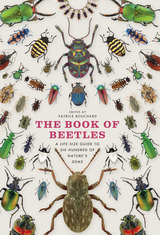 The Book of Beetles: A Life-Size Guide to Six Hundred of Nature's Gems
Patrice Bouchard
University of Chicago Press, 2014 When renowned British geneticist J. B. S. Haldane was asked what could be inferred about God from a study of his works, Haldane replied, “An inordinate fondness for beetles.” With 350,000 known species, and scientific estimates that millions more have yet to be identified, their abundance is indisputable as is their variety. They range from the delightful summer firefly to the one-hundred-gram Goliath beetle. Beetles offer a dazzling array of shapes, sizes, and colors that entice scientists and collectors across the globe.
The Book of Beetles celebrates the beauty and diversity of this marvelous insect. Six hundred significant beetle species are covered, with each entry featuring a distribution map, basic biology, conservation status, and information on cultural and economic significance. Full-color photos show the beetles both at their actual size and enlarged to show details, such as the sextet of spots that distinguish the six-spotted tiger beetle or the jagged ridges of the giant-jawed sawyer beetle. Based in the most up-to-date science and accessibly written, the descriptive text will appeal to researchers and armchair coleopterists alike.
The humble beetle continues to grow in popularity, taking center stage in biodiversity studies, sustainable agriculture programs, and even the dining rooms of adventurous and eco-conscious chefs. The Book of Beetles is certain to become the authoritative reference on these remarkably adaptable and beautiful creatures.
 The Book of Before and After: The Liturgy of the Hours of the Church of the East
Andrew Younan
Catholic University of America Press, 2025 The Book of Before & After is the traditional name given to the book of commonly-used portions of the liturgy of the hours of the Church of the East (the branches of which are now the Chaldean Catholic Church, the Assyrian Church of the East, the Ancient Apostolic Assyrian Church of the East, and the Malabar Catholic Church). This volume will present, for the first time, a complete English translation (from the original Aramaic/Syriac) of all the Ordinaries and Commons of the Liturgy of the Hours used by all the Churches of this Tradition. It will also include a complete translation of the Psalter as included in the liturgical books (with antiphons and prayers between sets of Psalms), the full collection of the famous “Martyr Hymns,” and extensive selections of the Propers for each week of the Liturgical Year. Finally, the volume will also include translations of the Introductions written by the various Chaldean and Assyrian Patriarchs who published editions of the Hudhra (the full liturgy of the hours) over the past two centuries, as well as a comprehensive Introductory Essay by Younan. Many of the hymns translated in this volume will be singable according to their original melody.
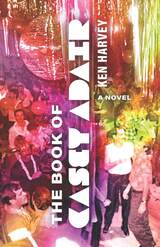 The Book of Casey Adair
Ken Harvey
University of Wisconsin Press, 2021 In the fall of 1980, young Casey Adair begins a year of postgraduate theater research in Spain, then on the verge of a military coup. As he attends plays and dinner parties, visits gay bars, and becomes increasingly involved in protests, Casey’s correspondence reveals intimate confessions and new understandings. He falls in love with a man named Octavio, gets a role in a major theatrical production, and revels in the awakening of his own sexuality and social consciousness. Then, a visit from his college friend Poppy leads to an emotionally charged evening that changes their lives forever.
Three years later Casey is an educator in Boston, trying to balance finding his voice as an AIDS activist, dealing with an intolerant headmaster, and rebuilding a relationship with his daughter. As dear friends fall ill to the virus, he struggles to understand how his many identities—father, teacher, caretaker, dissident, lover, husband—can coexist. In a world that asks so much of us, what is our responsibility to others and ourselves?
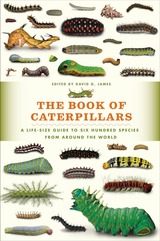 The Book of Caterpillars: A Life-Size Guide to Six Hundred Species from around the World
Edited by David G. James
University of Chicago Press, 2017 The weird and wonderful world of insects boasts some of the strangest creatures found in nature, and caterpillars are perhaps the most bizarre of all. While most of us picture caterpillars as cute fuzzballs munching on leaves, there is much more to them than we imagine. A caterpillar’s survival hinges on finding enough food and defending itself from the array of natural enemies lined up to pounce and consume. And the astounding adaptations and strategies they have developed to maximize their chances of becoming a butterfly or moth are only just beginning to be understood, from the Spicebush Swallowtail caterpillar that resembles a small snake to the Eastern Carpenter Bee Hawkmoth caterpillar that attempts to dissuade potential predators by looking like a diseased leaf.
The Book of Caterpillars unveils the mysteries of six hundred species from around the world, introducing readers to the complexity and beauty of these underappreciated insects. With the advent of high-quality digital macrophotography, the world of caterpillars is finally opening up. The book presents a wealth of stunning imagery that showcases the astonishing diversity of caterpillar design, structure, coloration, and patterning. Each entry also features a two-tone engraving of the adult specimen, emphasizing the wing patterns and shades, as well as a population distribution map and table of essential information that includes their habitat, typical host plants, and conservation status. Throughout the book are fascinating facts that will enthrall expert entomologists and curious collectors alike.
A visually rich and scientifically accurate guide to six hundred of the world’s most peculiar caterpillars, this volume presents readers with a rare, detailed look at these intriguing forms of insect life.
The Book of Commentary / Unquiet Garden of the Soul
Alexander Kluge
Seagull Books, 2023 A highly engaging exploration of existential questions, written in the midst of the Coronavirus pandemic.
The Book of Commentary / Unquiet Garden of the Soul confronts the reader with questions of existential meaning, questions rendered all the more potent by the backdrop of the Coronavirus pandemic: How fragile are we as human beings? How fragile are our societies? What is a “self,” an “I,” a “community”? How are we to orient ourselves? And what, if any, role does commentary play? In a fashion that will be familiar to longtime admirers of Alexander Kluge, the book stretches both back in time to the medieval glossators of Bologna and forward into interstellar space with imagined travel to the moon Europa. Kluge’s characteristic brief, vignette-like prose passages are interspersed with images from his own film work and QR codes, forming a highly engaging, thoroughly contemporary read.
 A Book of Conquest: The Chachnama and Muslim Origins in South Asia
Manan Ahmed Asif
Harvard University Press, 2016 The question of how Islam arrived in India remains markedly contentious in South Asian politics. Standard accounts center on the Umayyad Caliphate’s incursions into Sind and littoral western India in the eighth century CE. In this telling, Muslims were a foreign presence among native Hindus, sowing the seeds of a mutual animosity that presaged the subcontinent’s partition into Pakistan and India many centuries later.
But in a compelling reexamination of the history of Islam in India, Manan Ahmed Asif directs attention to a thirteenth-century text that tells the story of Chach, the Brahmin ruler of Sind, and his kingdom’s later conquest by the Muslim general Muhammad bin Qasim in 712 CE. The Chachnama has long been a touchstone of Indian history, yet it is seldom studied in its entirety. Asif offers a close and complete analysis of this important text, untangling its various registers and genres in order to reconstruct the political vision at its heart.
Asif challenges the main tenets of the Chachnama’s interpretation: that it is a translation of an earlier Arabic text and that it presents a history of conquest. Debunking both ideas, he demonstrates that the Chachnama was originally Persian and, far from advancing a narrative of imperial aggression, is a subtle and sophisticated work of political theory, one embedded in both the Indic and Islamic ethos. This social and intellectual history of the Chachnama is an important corrective to the divisions between Muslim and Hindu that so often define Pakistani and Indian politics today.
The Book of Daniel: Poems
Aaron Smith
University of Pittsburgh Press, 2019 A tour de force, Aaron Smith’s fourth collection of poetry, The Book of Daniel, resists the easy satisfactions of Beauty while managing the contemporary entanglements of art, sex, and grief. Part pop-thriller, part queer rage, and part mourning, these poems depict not only the complications of representation in the age of social media but a critique of identity. Taking on subjects as diverse as the literary canon, his mother’s incurable cancer diagnosis, gay bashing, celebrity gossip, bigotry, violence on TV, and Alexander McQueen’s suicide, Smith proves that the confessional lyric is not dead. In tangents as wild as they are reigned, with his characteristic blend of directness, vulnerability and humor, these poems take on the world as it is, a world we love even as it resists all intimacy.
The Book of Daniel: The JPS Audio Version
JPS: The Jewish Publication Society
Jewish Publication Society, 2009 The audio version of the Book of Daniel was created by JPS and JBI. Using the NJPS translation, Jonathan Roumie narrated this book exclusively for The Jewish Publication Society.
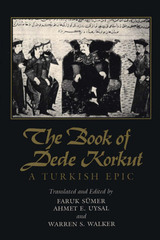 The Book of Dede Korkut: A Turkish Epic
Translated and edited by Faruk Sümer, Ahmet E. Uysal, and Warren S. Walker
University of Texas Press, 1972 One of the oldest surviving pieces of Turkish literature, The Book of Dede Korkut can be traced to tenth-century origins. Now considered the national epic of Turkey, it is the heritage of the ancient Oghuz Turks and was composed as they migrated westward from their homeland in Central Asia to the Middle East, eventually to settle in Anatolia. Who its primary creator was no one knows, the titular bard, Dede Korkut, being more a symbol of Turkish minstrelsy than a verifiable author. The songs and tales of countless minstrels lay behind The Book of Dede Korkut, and in its oral form the epic was undoubtedly subject to frequent improvisation by individual performers. Partly in prose, partly in verse, these legends were sung or chanted in the courts and camps of political and military leaders. Even after they had been recorded in written form, they remained part of an oral tradition. The present edition is the first complete text in English. The translators provide an excellent introduction to the language and background of the legends as well as a history of Dede Korkut scholarship. These outstanding tales will be of interest to all students of world mythology and folklore.
The Book of Deuteronomy: The JPS Audio Version
JPS: The Jewish Publication Society
Jewish Publication Society, 2009 The audio version of the Book of Deuteronomy was created by JPS and JBI. Using the NJPS translation, MD Laufer and Francie Anne Riley narrated this book exclusively for The Jewish Publication Society.
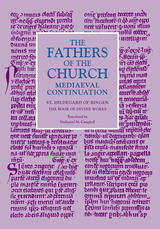 The Book of Divine Works
St. Hildegard of Bingen
Catholic University of America Press, 2018 Completed in 1173, The Book of Divine Works (Liber Divinorum Operum) is the culmination of the Visionary’s Doctor’s theological project, offered here for the first time in a complete and scholarly English translation. The first part explores the intricate physical and spiritual relationships between the cosmos and the human person, with the famous image of the universal Man standing astride the cosmic spheres. The second part examines the rewards for virtue and the punishments for vice, mapped onto a geography of purgatory, hellmouth, and the road to the heavenly city. At the end of each Hildegard writes extensive commentaries on the Prologue to John’s Gospel (Part 1) and the first chapter of Genesis (Part 2)—the only premodern woman to have done so. Finally, the third part tells the history of salvation, imagined as the City of God standing next to the mountain of God’s foreknowledge, with Divine Love reigning over all.
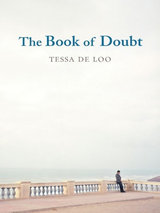 The Book of Doubt
Tessa de Loo
Haus Publishing, 2011 Even though he is the son of a Dutch mother, Saeed has a Moroccan first name in memory of the virtuoso oud player his mother fell in love with twenty years ago. When she found out she was pregnant, he ran off and returned to Morocco. Saeed decides to look for his father, in the hope of finding a new identity in a new world. His childhood friend Hassan accompanies him. Back then they shared an imaginary land which they both ruled. Now they only have one starting point: a grocery shop in Fez. From there they follow the trail of the oud player, who leads them from the cedar woods of Ifrane to the red dunes of the desert to the high Atlas, where Kasbahs are locked in a losing battle with decay. Saeed's search sends him deeper into disillusionment and into the arms of Islam, where he tries to find something to hold on to. But there is a disturbing presence. A seemingly fictitious character from their imaginary past infiltrates Saeed's quest. While Saeed desperately tries to get rid of him, different aspects of his life, more and more beyond his control, reach an apotheosis resulting in one final deed affecting man and beast alike.
The Book of Ecclesiastes: The JPS Audio Version
JPS: The Jewish Publication Society
Jewish Publication Society, 2009 The audio version of the Book of Ecclesiastes was created by JPS and JBI. Using the NJPS translation, Michael Bernstein narrated this book exclusively for The Jewish Publication Society.
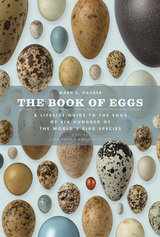 The Book of Eggs: A Life-Size Guide to the Eggs of Six Hundred of the World's Bird Species
Mark E. Hauber
University of Chicago Press, 2014 From the brilliantly green and glossy eggs of the Elegant Crested Tinamou—said to be among the most beautiful in the world—to the small brown eggs of the house sparrow that makes its nest in a lamppost and the uniformly brown or white chickens’ eggs found by the dozen in any corner grocery, birds’ eggs have inspired countless biologists, ecologists, and ornithologists, as well as artists, from John James Audubon to the contemporary photographer Rosamond Purcell. For scientists, these vibrant vessels are the source of an array of interesting topics, from the factors responsible for egg coloration to the curious practice of “brood parasitism,” in which the eggs of cuckoos mimic those of other bird species in order to be cunningly concealed among the clutches of unsuspecting foster parents.
The Book of Eggs introduces readers to eggs from six hundred species—some endangered or extinct—from around the world and housed mostly at Chicago’s Field Museum of Natural History. Organized by habitat and taxonomy, the entries include newly commissioned photographs that reproduce each egg in full color and at actual size, as well as distribution maps and drawings and descriptions of the birds and their nests where the eggs are kept warm. Birds’ eggs are some of the most colorful and variable natural products in the wild, and each entry is also accompanied by a brief description that includes evolutionary explanations for the wide variety of colors and patterns, from camouflage designed to protect against predation, to thermoregulatory adaptations, to adjustments for the circumstances of a particular habitat or season. Throughout the book are fascinating facts to pique the curiosity of binocular-toting birdwatchers and budding amateurs alike. Female mallards, for instance, invest more energy to produce larger eggs when faced with the genetic windfall of an attractive mate. Some seabirds, like the cliff-dwelling guillemot, have adapted to produce long, pointed eggs, whose uneven weight distribution prevents them from rolling off rocky ledges into the sea.
A visually stunning and scientifically engaging guide to six hundred of the most intriguing eggs, from the pea-sized progeny of the smallest of hummingbirds to the eggs of the largest living bird, the ostrich, which can weigh up to five pounds, The Book of Eggs offers readers a rare, up-close look at these remarkable forms of animal life.
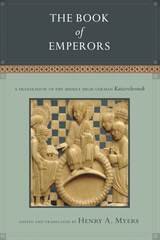 The Book of Emperors: A Translation of the Middle High German Kaiserchronik
Henry A. Myers
West Virginia University Press, 2013 The Kaiserchronik (c.1152–1165) is the first verse chronicle to have been written in a language other than Latin. This story recounts the exploits of the Roman, Byzantine, Carolingian, and Holy Roman kings and rulers, from the establishment of Rome to the start of the Second Crusade. As an early example of popular history, it was written for a non-monastic audience who would have preferred to read, or may only have been able to read, in German. As a rhymed chronicle, its combined use of the styles of language found within a vernacular epic and a factual treaty was a German innovation. The Book of Emperors is the first complete translation of the Kaiserchronik from Middle High German to English. It is a rich resource not only for medieval German scholars and students, but also for those working in early cultural studies. It brings together an understanding of the conception of kingship in the German Middle Ages, from the relationship between emperor and king, to the moral, theological, and legal foundations of claims and legitimacy and the medieval epistemological approaches to historiography. This translation includes a substantial introduction that discusses the historical and philological context of the work, as well as the themes of power and kingship. Each chapter begins with a brief introduction that distinguishes historical truths from the epic fiction found within the original text.
The Book of Esther: The JPS Audio Version
JPS: The Jewish Publication Society
Jewish Publication Society, 2009 The audio version of the Book of Esther was created by JPS and JBI. Using the NJPS translation, Elizabeth London narrated this book exclusively for The Jewish Publication Society.
The Book of Exodus: The JPS Audio Version
JPS: The Jewish Publication Society
Jewish Publication Society, 2009 The audio version of the Book of Exodus was created by JPS and JBI. Using the NJPS translation, Michael Bernstein and Elizabeth London narrated this book exclusively for The Jewish Publication Society.
The Book of Ezekiel: The JPS Audio Version
JPS: The Jewish Publication Society
Jewish Publication Society, 2009 The audio version of the Book of Ezekiel was created by JPS and JBI. Using the NJPS translation, Norma Fire, Kathy Ford, and MD Laufer narrated this book exclusively for The Jewish Publication Society.
The Book of Ezra: The JPS Audio Version
JPS: The Jewish Publication Society
Jewish Publication Society, 2009 The audio version of the Book of Ezra was created by JPS and JBI. Using the NJPS translation, MD Laufer narrated this book exclusively for The Jewish Publication Society.
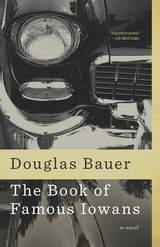 The Book of Famous Iowans: A Novel
Douglas Bauer
University of Iowa Press, 2014 Will Vaughn, a man of late middle age living in Chicago with his second wife, remembers the month of June 1957 in his hometown, the rural village of New Holland, Iowa. More precisely, Will remembers just a few days of that month and the quick sequence of astonishing events that have colored, ever since, the logic of his heart and the moods of his mind. He tells of his stunningly beautiful young mother, Leanne, who liked to recall the years of the Second World War, during which she sang with a dance band in a lounge in Cheyenne, Wyoming. He tells too of his father, Lewis, a soldier in the war who one night saw the “resplendently sequined” Leanne step onstage and began at that instant to plot his courtship of her.
But mostly what Will summons up in his intimate remembrance are those few catastrophic days in early June when he was “three months shy of twelve,” more than a decade after his parents have married and returned to the Vaughns’ home place, where Lewis farms his family’s land. For it is during those days that Leanne’s affair with a local man named Bobby Markum becomes known—first to Lewis and then, in a fiercely dramatic public confrontation, to young Will, to his beloved Grandmother Vaughn, and by nightfall to all the citizens of the town. The knowledge of such scandal, in so small a place, sets off a series of highly charged reactions, vivid consequences that surely determine the fates of every member of this unforgettable family.
A tale of memory and hero worship and the restless pulse of longing, The Book of Famous Iowans examines those forces that define not only a state made up of a physical geography, but more important, those states of the wholly human spirit.
The Book of Franza and Requiem for Fanny Goldmann
Ingeborg Bachmann, translated from the German by Peter Filkins
Northwestern University Press, 2010 These unfinished novels were intended to follow her widely acclaimed Malina in a Proustian cycle to be entitled Todesarten, or Ways of Dying. Through the tales of two women in postwar Austria, Bachmann explores the ways of dying inflicted on women by men, and upon the living by history, politics, religion, family, and the self.
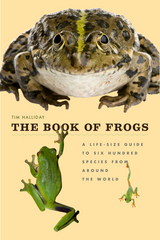 The Book of Frogs: A Life-Size Guide to Six Hundred Species from around the World
Tim Halliday
University of Chicago Press, 2015 With over 7,000 known species, frogs display a stunning array of forms and behaviors. A single gram of the toxin produced by the skin of the Golden Poison Frog can kill 100,000 people. Male Darwin’s Frogs carry their tadpoles in their vocal sacs for sixty days before coughing them out into the world. The Wood Frogs of North America freeze every winter, reanimating in the spring from the glucose and urea that prevent cell collapse.
The Book of Frogs commemorates the diversity and magnificence of all of these creatures, and many more. Six hundred of nature’s most fascinating frog species are displayed, with each entry including a distribution map, sketches of the frogs, species identification, natural history, and conservation status. Life-size color photos show the frogs at their actual size—including the colossal seven-pound Goliath Frog. Accessibly written by expert Tim Halliday and containing the most up-to-date information, The Book of Frogs will captivate both veteran researchers and amateur herpetologists.
As frogs increasingly make headlines for their troubling worldwide decline, the importance of these fascinating creatures to their ecosystems remains underappreciated. The Book of Frogs brings readers face to face with six hundred astonishingly unique and irreplaceable species that display a diverse array of adaptations to habitats that are under threat of destruction throughout the world.
 The Book of Frogs: A Life-Size Guide to Six Hundred Species from around the World, Second Edition
Mark O'Shea and Tim Halliday
University of Chicago Press, 2025 An up-to-date, beautifully illustrated, and beloved guide to six hundred of the world’s most fascinating frogs.
With almost nine thousand known species, frogs display a stunning array of forms and behaviors. A single gram of the toxin produced by the skin of the Golden Poison Frog can kill one hundred thousand people. Male Darwin’s Frogs carry their tadpoles in their vocal sacs for sixty days before coughing them out into the world. And the Wood Frogs of North America freeze every winter, reanimating in the spring.
The Book of Frogs documents the diversity and magnificence of all these anurans and many more. Readers meet six hundred of nature’s most fascinating frogs, with each entry including a distribution map, illustrations, species identification, natural history, and conservation status. Color photos show the frogs at their actual size—from Papua New Guinea’s diminutive Paedophryne amauensis, smaller than a coin, to Cameroon’s colossal Goliath Frog, heavier than some dogs. Written by experts Mark O’Shea and Tim Halliday and containing updated information on one hundred species and nearly twenty new entries, this revised edition will enthrall both veteran researchers and amateur herpetologists.
As frogs increasingly make headlines for their troubling worldwide decline, The Book of Frogs brings readers face to face with six hundred astonishingly unique and irreplaceable species that display a diverse array of adaptations to habitats that are ever changing.
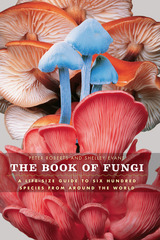 The Book of Fungi: A Life-Size Guide to Six Hundred Species from around the World
Peter Roberts and Shelley Evans
University of Chicago Press, 2011 Colorful, mysterious, and often fantastically shaped, fungi have been a source of wonder and fascination since the earliest hunter-gatherers first foraged for them. Today there are few, if any, places on Earth where fungi have not found themselves a home. And these highly specialized organisms are an indispensable part of the great chain of life. They not only partner in symbiotic relationships with over ninety percent of the world’s trees and flowering plant species, they also recycle and create humus, the fertile soil from which such flora receive their nutrition. Some fungi are parasites or saprotrophs; many are poisonous and, yes, hallucinogenic; others possess life-enhancing properties that can be tapped for pharmaceutical products; while a delicious few are prized by epicureans and gourmands worldwide.
In this lavishly illustrated volume, six hundred fungi from around the globe get their full due. Each species here is reproduced at its actual size, in full color, and is accompanied by a scientific explanation of its distribution, habitat, association, abundance, growth form, spore color, and edibility. Location maps give at-a-glance indications of each species’ known global distribution, and specially commissioned engravings show different fruitbody forms and provide the vital statistics of height and diameter. With information on the characteristics, distinguishing features, and occasionally bizarre habits of these fungi, readers will find in this book the common and the conspicuous, the unfamiliar and the odd. There is a fungal predator, for instance, that hunts its prey with lassos, and several that set traps, including one that entices sows by releasing the pheromones of a wild boar.
Mushrooms, morels, puffballs, toadstools, truffles, chanterelles—fungi from habitats spanning the poles and the tropics, from the highest mountains to our own backyards—are all on display in this definitive work.
The Book of Genesis: The JPS Audio Version
JPS: The Jewish Publication Society
Jewish Publication Society, 2009 The JPS TANAKH: The Jewish Bible, audio version is a recorded version of the JPS TANAKH, the most widely read English translation of the Hebrew, or Jewish, Bible. Produced and recorded for The Jewish Publication Society (JPS) by The Jewish Braille Institute (JBI), this complete, unabridged audio version of the Book of Genesis features over 3 and a half hours of readings by 2 narrators.
These short books of the Bible, each read in connection with a Jewish holy day, constitute a literature unto themselves--a poetic, spiritual, and literary treasure.
The recordings in this series include readings of The Song of Songs, Ruth, Lamentations, Ecclesiastes, Esther, and Jonah.
The Book of Habakkuk: The JPS Audio Version
JPS: The Jewish Publication Society
Jewish Publication Society, 2009 The audio version of the Book of Habakkuk was created by JPS and JBI. Using the NJPS translation, Elizabeth London narrated this book exclusively for The Jewish Publication Society.
The Book of Haggai: The JPS Audio Version
JPS: The Jewish Publication Society
Jewish Publication Society, 2009 The audio version of the Book of Haggai was created by JPS and JBI. Using the NJPS translation, MD Laufer narrated this book exclusively for The Jewish Publication Society.
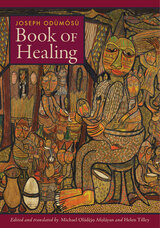 Book of Healing
Joseph Odùmósù
University of Wisconsin Press, 2026 The first book-length study of Yorùbá therapeutics, encompassing thousands of remedies for more than 160 different ailments, Ìwé Ìwòsàn (Book of Healing) was originally published in 1910 by Ìjẹ̀bú healer, politician, and public intellectual Joseph Odùmósù. Much of the scholarship on African healing cultures has been reconstructed from unwritten sources and texts produced by missionaries, colonial officials, and anthropologists. Of the small number of firsthand accounts in African languages (beyond Arabic) that have survived in written form, Odùmósù’s is the most extensive and encyclopedic.
While the existence of Odùmósù’s massive work is well-known in southwestern Nigeria, it has not previously been available in English. Michael Ọládẹ̀jọ Afọláyan and Helen Tilley have translated the volume in its entirety, and here use it as an entrée into greater understandings of Yorùbá medicine, spirituality, and print culture during a time of rapid change under British colonialism and the spread of Christianity.
The Book of Hosea: The JPS Audio Version
JPS: The Jewish Publication Society
Jewish Publication Society, 2009 The audio version of the Book of Hosea was created by JPS and JBI. Using the NJPS translation, MD Laufer narrated this book exclusively for The Jewish Publication Society.
The Book of Hours: Prayers to a Lowly God
Rainer Maria Rilke
Northwestern University Press, 2001 This is the first complete translation of Rainer Maria Rilke's The Book of Hours (Das Stunden-Buch) in more than forty years. This bilingual edition provides English-speaking readers with access to a critical work in the development of the most significant figure in twentieth-century German poetry. Kidder's delicately nuanced translation preserves Rilke's uncomplicated and melodic flow, his rhythm, and, where possible, his rhyme while remaining true to content.
Rilke penned The Book of Hours between 1899 and 1903 in three parts. Readers and experts alike consider the collection among Rilke's most important and enduring works.
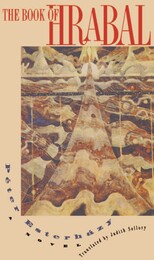 The Book of Hrabal
Peter Esterhazy, translated from the Czech by Judith Sollosy
Northwestern University Press, 1994 Winner of the 2004 German Publishers and Booksellers Association Peace Prize
Named a New York Times Notable Book of 1994
Winner of 1995 The New York Times Review Notable Books
An elaborate, elegant homage to the great Czech storyteller Bohumil Hrabal (author of Closely Watched Trains), The Book of Hrabal is also a farewell to the years of communism in Eastern Europe and a glowing paean to the mixed blessings of domestic life. Anna, blues-singing housewife and mother of three, addresses her reminiscences and reflections to Hrabal. They swing from domestic matters, to accounts of the injustices suffered by her family during the Stalinist 1950s and the police harassment in subsequent years, to her husband's crazy ideas. He frets over his current project, a book celebrating Hrabal, but seems unable to write it. Meanwhile, two angels, undercover as secret policemen, shadow the household-communicating via walkie-talkie-to prevent Anna from aborting her fourth child. God himself (aka Bruno) enters the scene; he chats with Hrabal, takes saxophone lessons from an irreverent Charlie Parker (unfortunately even this doesn't cure his tone-deaf ear), and tries to play the saxophone to dissuade her from ending the pregnancy.
The Book of Hulga
Rita Mae Reese, Illustrations by Julie Franki
University of Wisconsin Press, 2016 The Book of Hulga speculates—with humor, tenderness, and a brutal precision—on a character that Flannery O’Connor envisioned but did not live long enough to write: “the angular intellectual proud woman approaching God inch by inch with ground teeth.” These striking poems look to the same sources that O’Connor sought out, from Gerard Manley Hopkins to Edgar Allan Poe to Simone Weil. Original illustrations by Julie Franki further illuminate Reese’s imaginative verse biography of a modern-day hillbilly saint.
The Book of I Chronicles and II Chronicles: The JPS Audio Version
JPS: The Jewish Publication Society
Jewish Publication Society, 2009 The audio version of the Book of I Chronicles and II Chronicles was created by JPS and JBI. Using the NJPS translation, Lisa Kirsch, MD Laufer, Elizabeth London, and Francie Anne Riley narrated this book exclusively for The Jewish Publication Society.
The Book of I Kings and II Kings: The JPS Audio Version
JPS: The Jewish Publication Society
Jewish Publication Society, 2009 The audio version of Book of I Kings and II Kings was created by JPS and JBI. Using the NJPS translation, Michael Bernstein, Francie Anne Riley, MD Laufer, and Elizabeth London narrated this book exclusively for The Jewish Publication Society.
The Book of I Samuel and II Samuel: The JPS Audio Version
JPS: The Jewish Publication Society
Jewish Publication Society, 2009 The audio version of the Books of I Samuel and II Samuel was created by JPS and JBI. Using the NJPS translation, Michael Bernstein, Elizabeth London, Jonathan Roumie, and Francie Anne Riley narrated this book exclusively for The Jewish Publication Society.
The Book of Isaiah: The JPS Audio Version
JPS: The Jewish Publication Society
Jewish Publication Society, 2009 The audio version of the Book of Isaiah was created by JPS and JBI. Using the NJPS translation, Norma Fire and MD Laufer narrated this book exclusively for The Jewish Publication Society.
The Book of Jane
Jennifer Habel
University of Iowa Press, 2020 The Book of Jane is a perceptive, tenacious investigation of gender, authority, and art. Jennifer Habel draws a contrast between the archetype of the lone male genius and the circumscribed, relational lives of women. Habel points repeatedly to discrepancies of scale: the grand arenas of Balanchine, Einstein, and Matisse are set against the female miniature—the dancer’s stockings, the anonymous needlepoint, the diary entry, the inventory of a purse.
The Book of Jeremiah: The JPS Audio Version
JPS: The Jewish Publication Society
Jewish Publication Society, 2009 The audio version of the Book of Jeremiah was created by JPS and JBI. Using the NJPS translation, Michael Bernstein, Norma Fire, and Francie Anne Riley narrated this book exclusively for The Jewish Publication Society.
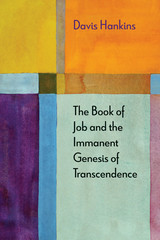 The Book of Job and the Immanent Genesis of Transcendence
Davis Hankins
Northwestern University Press, 2015 Winner of the 2017 Manfred Lautenschlaeger Award for Theological Promise Recent philosophical reexaminations of sacred texts have focused almost exclusively on the Christian New Testament, and Paul in particular. The Book of Job and the Immanent Genesis of Transcendence revives the enduring philosophical relevance and political urgency of the book of Job and thus contributes to the recent “turn toward religion” among philosophers such as Slavoj Žižek and Alain Badiou.
Job is often understood to be a trite folktale about human limitation in the face of confounding and absolute transcendence. On the contrary, Hankins demonstrates that Job is a drama about the struggle to create a just and viable life in a material world that is ontologically incomplete and consequently open to radical, unpredictable transformation. Job’s abiding legacy for any future materialist theology becomes clear as Hankins analyzes Job’s dramatizations of a transcendence that is not externally opposed to but that emerges from an ontologically incomplete material world.
The Book of Job: The JPS Audio Version
JPS: The Jewish Publication Society
Jewish Publication Society, 2009 The audio version of the Book of Job was created by JPS and JBI. Using the NJPS translation, Michael Bernstein, Norma Fire, Elizabeth London, Francie Anne Riley, and Jonathan Roumie narrated this book exclusively for The Jewish Publication Society.
The Book of Joel: The JPS Audio Version
JPS: The Jewish Publication Society
Jewish Publication Society, 2009 The audio version of the Book of Joel was created by JPS and JBI. Using the NJPS translation, Elizabeth London narrated this book exclusively for The Jewish Publication Society.
The Book of Jonah: A Social Justice Commentary
Rabbi Dr. Shmuly Yanklowitz
Central Conference of American Rabbis, 2020 The Book of Jonah is a unique text in the Jewish canon. Among the shortest books in the Bible, it is also one of the most mysterious and morally ambiguous. Who is this prophet running from God, hiding at the bottom of the ocean? Why does he struggle with God's mission to save and forgive Israel's enemies? In this volume, Rabbi Dr. Yanklowitz shows that the Book of Jonah delivers a message of human responsibility in a shared world. Illuminating such contemporary ethical issues as animal welfare, incarceration, climate change, weapons of mass destruction, and Jewish-Muslim relations, this social justice commentary urges us to join in repairing a broken world--a call that we, unlike Jonah, must hasten to answer.
The Book of Jonah: The JPS Audio Version
JPS: The Jewish Publication Society
Jewish Publication Society, 2009 The audio version of the Book of Jonah was created by JPS and JBI. Using the NJPS translation, Norma Fire narrated this book exclusively for The Jewish Publication Society.
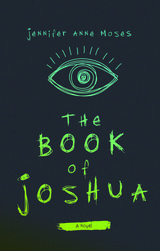 The Book of Joshua
Jennifer Anne Moses
University of Wisconsin Press, 2018 Eighteen-year-old Joshua Cushing wakes up in a psych ward, not knowing how he got there. Worse, he has only one eye. And no one in his family will tell him what happened to his girlfriend, Sophie. The one thing he knows for sure is that something happened, leaving him with a self and a life he barely recognizes.
Once a popular long-distance runner, Josh is now flabby, frustrated, and furious about returning to his New Jersey high scho ol to repeat his senior year. Forced to attend meetings with other "underage weirdos," he sinks into his loneliness. But when Josh meets Elizabeth Rinaldi, things begin to change. The only other new student in his class, she has a scar on her forehead, a Southern accent, and an attitude. Sharing a status as outcasts and an aptitude for snark, Josh and Elizabeth help each other escape their pasts.
The Book of Joshua weaves an unforgettable story from family secrets, friendship, faith, love, and redemption. It brings readers deeply into the lives of those who suffer from mental illness, as well as the friends and family affected by it.
The Book of Joshua: The JPS Audio Version
JPS: The Jewish Publication Society
Jewish Publication Society, 2009 The audio version of the Book of Joshua was created by JPS and JBI. Using the NJPS translation, Bruce Feiler and Lisa Kirsch narrated this book exclusively for The Jewish Publication Society.
The Book of Judges: The JPS Audio Version
JPS: The Jewish Publication Society
Jewish Publication Society, 2009 The audio version of the Book of Judges was created by JPS and JBI. Using the NJPS translation, Norma Fire, Elizabeth London, and Jonathan Roumie narrated this book exclusively for The Jewish Publication Society.
 The Book of Kane and Margaret: A Novel
Kiik Araki-Kawaguchi, Illustrations by Gautam Rangan
University of Alabama Press, 2020 WINNER OF FC2’S RONALD SUKENICK INNOVATIVE FICTION PRIZE
A novel about two teenage lovers who disrupt a World War II internment camp in Arizona
Kane Araki and Margaret Morri are not only the names of teenage lovers living in a World War II Japanese relocation camp. Kane Araki is also the name of a man who, mysteriously, sprouts a pair of black raven’s wings overnight. Margaret Morri is the name of the aging healer who treats embarrassing conditions (smelly feet and excessive flatulence). It’s also the name of an eleven-year-old girl who communes with the devil, trading human teeth for divine wishes.
In The Book of Kane and Margaret, dozens of Kane Arakis and Margaret Morris populate the Canal and Butte camp divisions in Gila River. Amidst their daily rituals and family dramas, they find ways to stage quiet revolutions against a domestic colonial experience. Some internees slip through barbed wire fences to meet for love affairs. Others attempt to smuggle whiskey, pornography, birds, dogs, horses, and unearthly insects into their family barracks. And another seeks a way to submerge the internment camp in Pacific seawater.
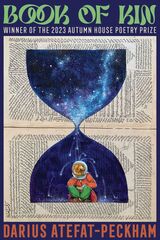 Book of Kin
Darius Atefat-Peckham
Autumn House Press, 2024 A debut collection that draws on the poet’s Iranian heritage to process life-altering loss and grief.
Darius Atefat-Peckham’s debut poetry collection follows a boy’s coming of age in the aftermath of a car accident that took the lives of both his mother and brother. Through these poems, Atefat-Peckham constructs a language for grief that is porous and revelatory, spoken assuredly across the imagination, bridging time and space, and creating a reciprocal haunting between the living and the dead.
Inspired by the Persian epic The Book of Kings, the Sufi mystic poetry of Rumi, and his mother’s poetry, these poems form a path of connection between the author and his Iranian heritage. Book of Kin interrogates what it means to exist between cultures, to be a survivor of tragedy, to practice love and joy toward one’s beloveds, and to hope for greater connection through poems that wade through time and memory “like so many fish spreading swimming in the green-blue.”
Book of Kin won the 2023 Autumn House Poetry Prize.
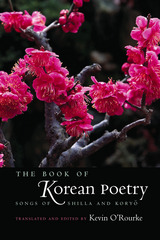 The Book of Korean Poetry: Songs of Shilla and Koryo
Kevin O'Rourke
University of Iowa Press, 2006 Korea’s history is divided into four periods: the Three Kingdoms of Koguryo (37 bc–ad 668), Shilla (57 bc–ad 668), and Paekche (18 bc–ad 660); Unified Shilla (668–935); Koryo (935–1392); and Choson (1392–1910). Kevin O’Rourke’s The Book of Korean Poetry traces Korean poetry from the pre-Shilla era to the end of Korea’s golden poetry period in the Koryo dynasty.There are two poetry traditions in Korea: hanshi (poems by Korean poets in Chinese characters) and vernacular poems, which are invariably songs. Hanshi is a poetry to be read and contemplated; the vernacular is a poetry to be sung and heard. Hanshi was aimed at personal cultivation, vernacular poetry primarily at entertainment. Hanshi was a much more private discipline; vernacular poetry was composed for the most part against a convivial background of wine, music, and dance.In this comprehensive treatment of the poetry of Shilla and Koryo, O’Rourke divides one hundred fifty poems into five sections: Early Songs, Shilla hanshi, Shilla hyangga, Koryo kayo, and Koryo hanshi and shijo. Only a few pre-Shilla poems are extant; O’Rourke features all five. All fourteen extant Shilla hyangga are included. Seventeen major Koryo kayo are featured; only a few short, incantatory pieces that defied translation were excluded. Fourteen of the fewer than twenty Koryo shijo with claims to authenticity are presented. From the vast number of extant hanshi, O’Rourke selected poems with the most intrinsic merit and universal appeal. In addition to introductory essays on the genres of hanshi, hyangga, Koryo kayo, and shijo, O’Rourke interleaves his graceful translations with commentary on the historical backgrounds, poetic forms, and biographical notes on the poets’ lives as well as guides to the original texts, bibliographical materials, and even anecdotes on how the poems came to be written. Along with the translations themselves, O’Rourke’s annotations of the poems make this volume a particularly interesting and important introduction to the scholarship of East Asian literature.
The Book of Korean Shijo
Kevin O'Rourke
Harvard University Press, 2002 The Korean genre known as shijo is short song lyrics. Originally meant to be sung rather than recited, these short poems are light, personal, and very often conversational. The language is simple, direct, and devoid of elaboration or ornamentation. The shijo poet gives a firsthand account of his personal experience of life and emotion: the rise and fall of dynasties, friendship, love, parting, the pleasures of wine, the beauty and transience of life, the inexorable advance of old age. In this anthology of translations of 612 shijo, Kevin O'Rourke introduces the English reader to this venerable and witty style of verse. The anthology covers the entire range of shijo production from the tenth century to the modern era.
The Book of Lamentations: The JPS Audio Version
JPS: The Jewish Publication Society
Jewish Publication Society, 2009 The audio version of the Book of Lamentations was created by JPS and JBI. Using the NJPS translation Norma Fire narrated this book exclusively for The Jewish Publication Society.
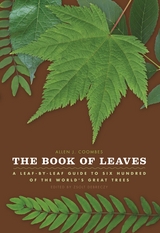 The Book of Leaves: A Leaf-by-Leaf Guide to Six Hundred of the World's Great Trees
Allen J. Coombes
University of Chicago Press, 2010 Of all our childhood memories, few are quite as thrilling, or as tactile, as those of climbing trees. Scampering up the rough trunk, spying on the world from the cool green shelter of the canopy, lying on a limb and looking up through the leaves at the summer sun almost made it seem as if we were made for trees, and trees for us.Even in adulthood, trees retain their power, from the refreshing way their waves of green break the monotony of a cityscape to the way their autumn transformations take our breath away.
In this lavishly illustrated volume, the trees that have enriched our lives finally get their full due, through a focus on the humble leaves that serve, in a sense, as their public face. The Book of Leaves offers a visually stunning and scientifically engaging guide to six hundred of the most impressive and beautiful leaves from around the world. Each leaf is reproduced here at its actual size, in full color, and is accompanied by an explanation of the range, distribution, abundance, and habitat of the tree on which it’s found. Brief scientific and historical accounts of each tree and related species include fun-filled facts and anecdotes that broaden its portrait.
The Henry’s Maple, for instance, found in China and named for an Irish doctor who collected leaves there, bears little initial resemblance to the statuesque maples of North America, from its diminutive stature to its unusual trifoliolate leaves. Or the Mediterranean Olive, which has been known to live for more than 1,500 years and whose short, narrow leaves only fall after two or three years, pushed out in stages by the emergence of younger leaves.
From the familiar friends of our backyards to the giants of deep woods, The Book of Leaves brings the forest to life—and to our living rooms—as never before.
The Book of Leviticus: The JPS Audio Version
JPS: The Jewish Publication Society
Jewish Publication Society, 2009 The audio version of the Book of Leviticus was created by JPS and JBI. Using the NJPS translation, Francie Anne Riley and Jonathan Roumie narrated this book exclusively for The Jewish Publication Society.
The Book of Life
Joseph Campana
Tupelo Press, 2019 The Book of LIFE finds inspiration in the pages of LIFE Magazine, from its origin in the Great Depression to its demise amid the Apollo missions, with many milestones between: the Korean War and Cuban missile crisis, the Vietnam War and immolation of Thich Quang Duc, and the Kennedy and King assassinations. LIFE’s compendium of the American century stretches from its initial cover, Margaret Bourke-White’s photo of the Fort Peck Dam in Montana, to its final, year-in-review issue covering the lunar mission, with an image of the Earth that awakened a planetary consciousness. Using the lens of poet, arts critic, and scholar of Renaissance literature, Joseph Campana locates an individual life in the churning wake of these great events; he is a poet who persists in the hope of reawakening the past, while simultaneously finding and providing a guide for this journey called life.
The Book of Life: Selected Jewish Poems, 1979–2011
Alicia Ostriker
University of Pittsburgh Press, 2012
“Poet Alicia Ostriker is also a highly original scholar/teacher of midrash, the commentary and exegesis of scripture (the same root as madrasa, place of study). Here she ‘studies’ Jewish history, Jewish passion, Jewish contradictions, in a compendium of learned, crafted, earthy and outward-looking poems that show how this quest has informed and enriched her whole poet’s trajectory.”
—Marilyn Hacker
The Book of Looms: A History of the Handloom from Ancient Times to the Present
Eric Broudy
University Press of New England, 1993 The handloom--often no more than a bundle of sticks and a few lengths of cordage--has been known to almost all cultures for thousands of years. Eric Broduy places the wide variety of handlooms in historical context. What influenced their development? How did they travel from one geographic area to another? Were they invented independently by different cultures? How have modern cultures improved on ancient weaving skills and methods? Broudy shows how virtually every culture, no matter how primitive, has woven on handlooms. He highlights the incredible technical achievement of primitive cultures that created magnificent textiles with the crudest of tools and demonstrates that modern technology has done nothing to surpass their skill or inventiveness.
The Book of Looms: A History of the Handloom from Ancient Times to the Present
Eric Broudy
Brandeis University Press, 2021 A heavily illustrated classic on the evolution of the handloom.
The handloom—often no more than a bundle of sticks and a few lengths of cordage—has been known to almost all cultures for thousands of years. Eric Broudy places the wide variety of handlooms in their historical context. What influenced their development? How did they travel from one geographic area to another? Were they invented independently by different cultures? How have modern cultures improved on ancient weaving skills and methods? Broudy shows how virtually every culture has woven on handlooms. He highlights the incredible technical achievement of early cultures that created magnificent textiles with the crudest of tools and demonstrates that modern technology has done nothing to surpass their skill or inventiveness.
The Book of Malachi: The JPS Audio Version
JPS: The Jewish Publication Society
Jewish Publication Society, 2009 The audio version of the Book of Malachi was created by JPS and JBI. Using the NJPS translation, Michael Bernstein narrated this book exclusively for The Jewish Publication Society.
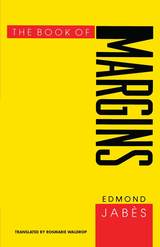 The Book of Margins
Edmond Jabès
University of Chicago Press, 1993 The death of Edmond Jabès in January 1991 silenced one of the most compelling voices of the postmodern, post-Holocaust era. Jabès's importance as a thinker, philosopher, and Jewish theologian cannot be overestimated, and his enigmatic style—combining aphorism, fictional dialogue, prose meditation, poetry, and other forms—holds special appeal for postmodern sensibilities.
In The Book of Margins, his most critical as well as most accessible book, Jabès is again concerned with the questions that inform all of his work: the nature of writing, of silence, of God and the Book. Jabès considers the work of several of his contemporaries, including Georges Bataille, Maurice Blanchot, Roger Caillois, Paul Celan, Jacques Derrida, Michel Leiris, Emmanuel Lévinas, Pier Paolo Pasolini, and his translator, Rosmarie Waldrop. This book will be important reading for students of Jewish literature, French literature, and literature of the modern and postmodern ages.
Born in Cairo in 1912, Edmond Jabès lived in France from 1956 until his death in 1991. His extensively translated and widely honored works include The Book of Questions and The Book of Shares. Both of these were translated into English by Rosmarie Waldrop, who is also a poet.
Religion and Postmodernism series
 The Book of Marvels: A Medieval Guide to the Globe
Larisa Grollemond
J. Paul Getty Trust, The, 2024 This fascinating volume explores an important fifteenth-century illustrated manuscript tradition that provides a revealing glimpse of how western Europeans conceptualized the world.
From the classical encyclopedias of Pliny to famous tales such as The Travels of Marco Polo, historical travel writing has had a lasting impact, despite the fact that it was based on a curious mixture of truth, legend, and outright superstition. One foundational medieval source that expands on the ancient idea of the “wonders of the world” is the fifteenth-century French Book of the Marvels of the World, an illustrated guide to the globe filled with oddities, curiosities, and wonders—tales of fantasy and reality intended for the medieval armchair traveler. The fifty-six locales featured in the manuscript are presented in a manner that suggests authority and objectivity but are rife with stereotypes and mischaracterizations, meant to simultaneously instill a sense of wonder and fear in readers.
In The Book of Marvels, the authors explore the tradition of encyclopedias and travel writing, examining the various sources for geographic knowledge in the Middle Ages. They look closely at the manuscript copies of the French text and its complex images, delving into their origins, style, content, and meaning. Ultimately, this volume seeks to unpack how medieval white Christian Europeans saw their world and how the fear of difference—so pervasive in society today—is part of a long tradition stretching back millennia.
This volume is published to accompany an exhibition on view at the J. Paul Getty Museum at the Getty Center from June 11 to September 1, 2024, and at the Morgan Library & Museum from January 24 to May 25, 2025.
 The Book of Marys and Glaciers
Carrie Olivia Adams
Tupelo Press, 2026 Three sequences of poems engaging with deserts, consumerism, Alaskan ice, religious icons, and more.
The poems collected in The Book of Marys and Glaciers traverse both the psychological and physical landscape to explore the too-muchness and overwhelm that categorizes our demand-driven age. The longest series, “Dust Cover,” is a meditation on deserts of all kinds—geographic, urban, celestial, domestic, and linguistic. The poems themselves enact their own ideas of space and emptiness, building to a work that grain after grain becomes heavy as a whole. In contrast, the title sequence “The Book of Marys and Glaciers” is an expansive work of feminist ecopoetics that asks questions about the role of women as mothers, religious figures, friends, and lovers in a society that rarely makes room for quietude anymore.
Altogether, the poems are controlled, precise investigations and interrogations of the ideas and images we take for granted.
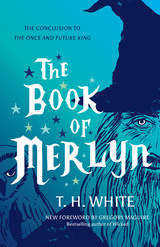 The Book of Merlyn: The Conclusion to The Once and Future King
By T. H. White, foreword by Gregory Maguire, prologue by Sylvia Townsend Warner, illustrations by Trevor Stubley
University of Texas Press, 2018 This magical account of King Arthur’s last night on earth, rediscovered in a collection of T. H. White’s papers at the Harry Ransom Center at the University of Texas at Austin, spent twenty-six weeks on the New York Times bestseller list following its publication in 1977. While preparing for his final, fatal battle with his bastard son, Mordred, Arthur returns to the Animal Council with Merlyn, where the deliberations center on ways to abolish war. More self-revealing than any other of White’s books, Merlyn shows his mind at work as he agonized over whether to join the fight against Nazi Germany while penning the epic that would become The Once and Future King. The Book of Merlyn has been cited as a major influence by such illustrious writers as Kazuo Ishiguro, J. K. Rowling, Helen Macdonald, Neil Gaiman, and Lev Grossman. “Arriving from beyond the curve of time and apparently from the grave, The Book of Merlyn stirs its own pages, saying, wait: you didn’t get the whole story. . . . It gives us a final glimpse of those two immortal characters, Wart and Merlyn, up close, slo-mo, with a considered and affectionate scrutiny. The book is an elegiac posting from a master storyteller of the twentieth century. Its reissue in our next century is just as welcome as when it first arrived forty years ago. . . . Certainly the moral questions about the military use of force perplex the world still. . . . The efficacy of treaties, the trading of insults among the potentates of the day, the testing of weapons, the weaponizing of trade—these strategies are still front and center. Rather terrifyingly so. We do well to revisit what that old schoolteacher of children, Merlyn, has been trying to point out to us about power and responsibility.”
—Gregory Maguire, from the foreword
The Book of Merlyn: The Unpublished Conclusion to The Once and Future King
By T. H. White
University of Texas Press, 1977 This magical account of King Arthur’s last night on earth spent weeks on the New York Times best-seller list following its publication in 1977. Even in addressing the profound issues of war and peace, The Book of Merlyn retains the life and sparkle for which White is known. The tale brings Arthur full circle, an ending, White wrote, that "will turn my completed epic into a perfect fruit, ‘rounded off and bright and done.’"
The Book of Micah: The JPS Audio Version
JPS: The Jewish Publication Society
Jewish Publication Society, 2009 The audio version of the Book of Micah was created by JPS and JBI. Using the NJPS translation, MD Laufer narrated this book exclusively for The Jewish Publication Society.
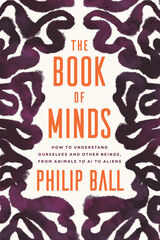 The Book of Minds: How to Understand Ourselves and Other Beings, from Animals to AI to Aliens
Philip Ball
University of Chicago Press, 2022 Popular science writer Philip Ball explores a range of sciences to map our answers to a huge, philosophically rich question: How do we even begin to think about minds that are not human?
Sciences from zoology to astrobiology, computer science to neuroscience, are seeking to understand minds in their own distinct disciplinary realms. Taking a uniquely broad view of minds and where to find them—including in plants, aliens, and God—Philip Ball pulls the pieces together to explore what sorts of minds we might expect to find in the universe. In so doing, he offers for the first time a unified way of thinking about what minds are and what they can do, by locating them in what he calls the “space of possible minds.” By identifying and mapping out properties of mind without prioritizing the human, Ball sheds new light on a host of fascinating questions: What moral rights should we afford animals, and can we understand their thoughts? Should we worry that AI is going to take over society? If there are intelligent aliens out there, how could we communicate with them? Should we? Understanding the space of possible minds also reveals ways of making advances in understanding some of the most challenging questions in contemporary science: What is thought? What is consciousness? And what (if anything) is free will?
Informed by conversations with leading researchers, Ball’s brilliant survey of current views about the nature and existence of minds is more mind-expanding than we could imagine. In this fascinating panorama of other minds, we come to better know our own.
The Book of Minor Perverts: Sexology, Etiology, and the Emergences of Sexuality
Benjamin Kahan
University of Chicago Press, 2019 Shortlisted for the Modernist Studies Assocation Book Prize
Statue-fondlers, wanderlusters, sex magicians, and nymphomaniacs: the story of these forgotten sexualities—what Michel Foucault deemed “minor perverts”—has never before been told. In The Book of Minor Perverts, Benjamin Kahan sets out to chart the proliferation of sexual classification that arose with the advent of nineteenth-century sexology. The book narrates the shift from Foucault’s “thousand aberrant sexualities” to one: homosexuality. The focus here is less on the effects of queer identity and more on the lines of causation behind a surprising array of minor perverts who refuse to fit neatly into our familiar sexual frameworks. The result stands at the intersection of history, queer studies, and the medical humanities to offer us a new way of feeling our way into the past.
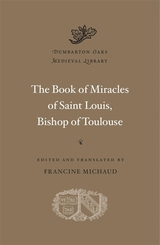 The Book of Miracles of Saint Louis, Bishop of Toulouse
Francine Michaud
Harvard University Press At the intersection of medieval religion and medicine.
Prince Louis, son of Charles II of Anjou, died at age twenty-three in 1297, but had already taken vows as a Franciscan friar and been invested as bishop of Toulouse only six months earlier. Immediately after he was buried in Marseille, miracles were reported—first by local citizens then by pilgrims as rumors of his powers spread to villages and towns in Provence. Louis was canonized in 1317, the third member of the First Order of the Friars Minor to achieve official sainthood, after Saint Francis of Assisi and Saint Anthony of Padua.
Originally written in Provençal and then translated into Latin, The Book of Miracles of Saint Louis, Bishop of Toulouse carefully records 211 miracle stories that attest to Louis’s qualifications for canonization and document remarkable community engagement in saint-making. Illness prompted most petitions to Saint Louis. The narratives thus include detailed reports of diseases, conditions, and disabilities afflicting both people and animals. At a time when new medical practices were being promoted and both Christian and Jewish physicians were ubiquitous at the bedsides of the sick, The Book of Miracles testifies to an enduring faith in God and in the healing skills of meritorious saints such as Louis, who was unequivocally qualified as a “doctor of souls.”
The Book of Miracles of Saint Louis, Bishop of Toulouse is the first translation of the early fourteenth-century Latin manuscript and offers vivid and valuable insights into medieval medicine and mentalités.
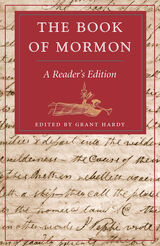 The Book of Mormon: A Reader's Edition
Edited by Grant Hardy
University of Illinois Press, 2003 Regarded as sacred scripture by millions, the Book of Mormon -- first published in 1830 -- is one of the most significant documents in American religious history. This new reader-friendly version reformats the complete, unchanged 1920 text in the manner of modern translations of the Bible, with paragraphs, quotations marks, poetic forms, topical headings, multichapter headings, indention of quoted documents, italicized reworkings of biblical prophecies, and minimized verse numbers. It also features a hypothetical map based on internal references, an essay on Book of Mormon poetry, a full glossary of names, genealogical charts, a basic bibliography of Mormon and non-Mormon scholarship, a chronology of the translation, eyewitness accounts of the gold plates, and information regarding the lost 116 pages and significant changes in the text. The Book of Mormon claims to be the product of three historical interactions: the writings of the original ancient American authors, the editing of the fourth-century prophet Mormon, and the translation of Joseph Smith. The editorial aids and footnotes in this edition integrate all three perspectives and provide readers with a clear guide through this complicated text. New readers will find the story accessible and intelligible; Mormons will gain fresh insights from familiar verses seen in a broader narrative context. This is the first time the Book of Mormon has been published with quotation marks, select variant readings, and the testimonies of women involved in the translation process. It is also the first return to a paragraphed format since versification was added in 1879.
The Book of Mormon and DNA Research
Daniel C. Peterson
Foundation for Ancient Research and Mormon Studies, 2008 In the last few years, the topic of how DNA research fits in with the text of the Book of Mormon has become increasingly divisive. Now, for the first time in one volume, respected DNA scientists, geneticists, and Book of Mormon scholars provide their views on DNA and the Book of Mormon.
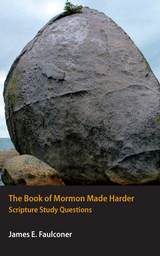 The Book of Mormon Made Harder
James E. Faulconer
Neal A. Maxwell Institute for Religious Scholarship, 2014 Latter-day Saint philosopher James E. Faulconer’s Made Harder series raises many more questions than it answers. And that is precisely the point. Faulconer wrote The Book of Mormon Made Harder on the premise that our scripture study is only as good as the questions we bring to the endeavor. While many books about the Book of Mormon provide useful shortcuts, chapter synopses, timelines, and memorizable bullet points, this book consists almost entirely of challenging questions (with occasional commentary for clarity’s sake) because, in Faulconer’s experience, questions themselves are the key to reflective and deep scripture study. This book is intended to make reading harder—and therefore fresher—by priming your pondering pump with insightful study questions. The Book of Mormon Made Harder is the perfect tool to improve personal and family scripture study, sacrament meeting talks, or Sunday School lessons. So much of modern life is geared to finding faster and easier ways to do the same old things. The Made Harder series is proof that making things easier does not always make them better.
The Book of Nahum: The JPS Audio Version
JPS: The Jewish Publication Society
Jewish Publication Society, 2009 The audio version of the Book of Nahum was created by JPS and JBI. Using the NJPS translation Michael Bernstein narrated this book exclusively for The Jewish Publication Society.
The Book of Nehemiah: The JPS Audio Version
JPS: The Jewish Publication Society
Jewish Publication Society, 2009 The audio version of the Book of Nehemiah was created by JPS and JBI. Using the NJPS translation, Michael Bernstein narrated this book exclusively for The Jewish Publication Society.
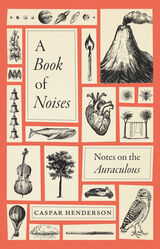 A Book of Noises: Notes on the Auraculous
Caspar Henderson
University of Chicago Press, 2023 A wide-ranging exploration of the sounds that shape our world in invisible yet significant ways.
The crackling of a campfire. The scratch, hiss, and pop of a vinyl record. The first glug of wine as it is poured from a bottle. These are just a few of writer Caspar Henderson’s favorite sounds. In A Book of Noises, Henderson invites readers to use their ears a little better—to tune in to the world in all its surprising noisiness.
Describing sounds from around the natural and human world, the forty-eight essays that make up A Book of Noises are a celebration of all things “auraculous.” Henderson calls on his characteristic curiosity to explore sounds related to humans (anthropophony), other life (biophony), the planet (geophony), and space (cosmophony). Henderson finds the beauty in everyday sounds, like the ringing of a bell, the buzz of a bee, or the “earworm” songs that get stuck in our heads. A Book of Noises also explores the marvelous, miraculous sounds we may never get the chance to hear, like the deep boom of a volcano or the quiet, rustling sound of the Northern Lights.
A Book of Noises will teach readers to really listen to the sounds of the world around them, to broaden and deepen their appreciation of the humans, animals, rocks, and trees simultaneously broadcasting across the whole spectrum of sentience.
The Book of Numbers: The JPS Audio Version
JPS: The Jewish Publication Society
Jewish Publication Society, 2009 The audio version of the Book of Numbers was created by JPS and JBI. Using the NJPS translation, Kathy Ford and Michael Bernstein narrated this book exclusively for The Jewish Publication Society.
The Book of Obadiah: The JPS Audio Version
JPS: The Jewish Publication Society
Jewish Publication Society, 2009 The audio version of the Book of Obadiah was created by JPS and JBI. Using the NJPS translation, Kathy Ford narrated this book exclusively for The Jewish Publication Society.
Book of Old Maps: Delineating American History from the Earliest Days down to the Close of the Revolutionary War
Emerson David Fite
Harvard University Press This collection of old maps is designed to illustrate the course of American history from the earliest time down to the close of the Revolutionary War. The editors have brought them together from their hiding places in dark, dusty, and, in some cases, forgotten repositories. The seventy-four maps here reproduced were selected from many thousands examined by the editors in the great libraries in America, in the Vatican, in the British Museum, and in the Bibliothèque Nationale. Each map is accompanied by a brief essay setting forth its historical significance. As far as possible, the map is allowed to tell its own story through the reproduction of its numerous legends, aided by quotations from contemporary books.
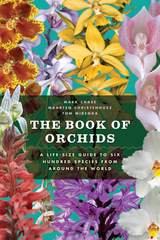 The Book of Orchids: A Life-Size Guide to Six Hundred Species from around the World
Mark W. Chase, Maarten J. M. Christenhusz, and Tom Mirenda
University of Chicago Press, 2017 One in every seven flowering plants on earth is an orchid. Yet orchids retain an air of exotic mystery—and they remain remarkably misunderstood and underappreciated. The orchid family contains an astonishing array of colors, forms, and smells that captivate growers from all walks of life across the globe. Though undeniably elegant, the popular moth orchid—a grocery store standard—is a bland stand-in when compared with its thousands of more complex and fascinating brethren, such as the Demon Queller, which grows in dark forests where its lovely blooms are believed to chase evil forces away. There is the Fetid Sun-God, an orchid that lures female flies to lay their eggs on its flowers by emitting a scent of rancid cheese. Or the rare, delicate Lizard Orchid, which mimics the appearance of lizards but smells distinctly of goat.
The Book of Orchids revels in the diversity and oddity of these beguiling plants. Six hundred of the world’s most intriguing orchids are displayed, along with life-size photographs that capture botanical detail, as well as information about distribution, peak flowering period, and each species’ unique attributes, both natural and cultural. With over 28,000 known species—and more being discovered each year—the orchid family is arguably the largest and most geographically widespread of the flowering plant families. Including the most up-to-date science and accessibly written by botanists Mark Chase, Maarten Christenhusz, and Tom Mirenda, each entry in The Book of Orchids will entice researchers and orchid enthusiasts alike.
With stunning full-color images, The Book of Orchids is sure to become the go-to reference for these complex, alluring, and extraordinarily adaptable plants.
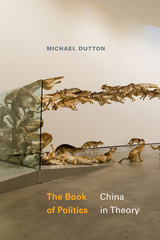 The Book of Politics: China in Theory
Michael Dutton
Duke University Press, 2024 In The Book of Politics, Michael Dutton offers an affective theorization of the political and a political theorization of affect. Drawing on Western and Chinese social theory and practice, Dutton rethinks Carl Schmitt’s insistence that the political can be thought of only within the antagonistic pairing of friend and enemy. Dutton shows how the power of the friend/enemy binary must be understood by conceptualizing the political as the channeling, harnessing, and transforming of affective energy flows in relation to that binary. Given this affective nature of politics, Dutton contends that to rethink the political means moving away from a political science toward an art of the political. Such an art highlights fluidity and pulls away from Eurocentric political theory, requiring a conceptualization of the political as global. He juxtaposes ancient Chinese cosmology, medicine, and Maoism against the monuments of early capitalist modernity such as the Crystal Palace and the Eiffel Tower to highlight the differences in political investments and intensities. From the Chinese revolution to the global rise of right-wing movements, Dutton rethinks politics in the contemporary world.
The Book of Proverbs: A Social Justice Commentary
Rabbi Dr. Shmuly Yanklowitz
Central Conference of American Rabbis, 2022 The Book of Proverbs, attributed to King Solomon, is a profound collection of Jewish wisdom, song, and inspiration. Yet to contemporary readers, the text can appear vague, ambiguous, and contradictory. In this refreshing and relevant commentary, Rabbi Dr. Shmuly Yanklowitz challenges us to find modern meaning in this ancient text. Using his signature blend of social justice practice and Jewish thought from throughout history, Rabbi Yanklowitz shows how the words of Proverbs are strikingly pertinent to issues we face today. Drawing on a wide range of sources, Rabbi Yanklowitz explores such topics as income inequality, feminism, animal rights, environmentalism, and many more. The author’s commentary is paired with the full text of Proverbs—in both Hebrew and an updated, gender-accurate translation—so readers can glean their own insights.
The Book of Proverbs: The JPS Audio Version
JPS: The Jewish Publication Society
Jewish Publication Society, 2009 The audio version of the Book of Proverbs was created by JPS and JBI. Using the NJPS translation, Michael Bernstein, Norma Fire, Kathy Ford, and Francie Anne Riley narrated this book exclusively for The Jewish Publication Society.
The Book of Psalms: The JPS Audio Version
JPS: The Jewish Publication Society
Jewish Publication Society, 2009 The audio version of the Book of Psalms was created by JPS and JBI. Using the NJPS translation, Michael Bernstein, Norma Fire, Kathy Ford, Harold Kushner, Elizabeth London, Francie Anne Rile, and Jonathan Roumie narrated this book exclusively for The Jewish Publication Society.
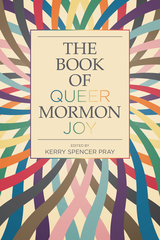 The Book of Queer Mormon Joy
Pray, Kerry Spencer
Signature Books, 2024 The story of queer Mormons is one that some might not expect to be joyful. The Church of Jesus Christ of Latter-day Saints has traditionally asserted that queerness is counter to God’s plan and that gender as determined at birth is eternal. Any marriage other than a monogamous pairing of male and female is “counterfeit.” So called “wickedness,” we are told, “never was happiness.” But queer Mormons tell different stories—stories filled with joy. This collection includes essays by queer Mormons across the LGBTQ spectrum who, when they looked inside themselves, found divinity rather than sin. Stories by people who are made exactly as they are meant to be, and live accordingly. Queer Mormons who feel forced out of the institutional church don’t typically find despair on the outside or abandonment by the divine. Instead, their lives are rich and beautiful—made all the more so by the struggle. The Book of Mormon tells us, “Men are that they might have joy.” The Book of Queer Mormon Joy affirms that trans, nonbinary, intersex, asexual, bisexual, polyamorous, and gay people have joy. Joy is for everyone.
The Book of Ruin
Rigoberto González
Four Way Books, 2019 These poems consider the history of the Americas and their uncertain future, particularly regarding the danger of climate change, and suggest a line from colonialism toward a shattering “Apocalipsixtlán.”
 The Book of Rules of Tyconius: Its Purpose and Inner Logic
Pamela Bright
University of Notre Dame Press, 1988
The Liber Regularum, written by Tyconius in the Fourth Century A.D., was the first system of biblical interpretation proposed by a Latin theologian. Augustine was very interested in this work and included an extraordinary summation of it in his De doctrina christiana. Although this treatment insured the preservation of the work and its lasting fame, Augustine's summary became better known than the original.
Pamela Bright's The Book of Rules of Tyconius: Its Purpose and Inner Logic reintroduces this neglected classic of early church literature. Bright asserts that although Augustine was greatly influenced by the Liber Regularum, his philosophical differences caused him to misunderstand its meaning. Bright reexamines the meaning of "prophecy" and "rule" from Tyconius's perspective and reveals that the purpose of the book was not to provide a general guide to scriptural interpretation, but rather a way to interpret apocalyptic texts. She cites Tyconius's intense concern with evil in the church as the genesis of his interest in the apocalypse and subsequently the meaning of the scripture concerning it. Tyconius speaks of the "seven mystical rules" of scripture that with the grace of the Holy Spirit reveal the true meaning of prophecy. If an interpreter follows the "logic" of these rules, the nature of the church as composed by both good and evil membership is revealed.
Bright argues that Tyconius was not illogical or incompetent in the work's composition as many critics have claimed but rather that he organized his material in a concentric pattern so that Rule Four, the center of the seven rules, is also the central development of his theory. Of interest to theologians, students of biblical interpretation and of Augustine, The Book of Rules of Tyconiusfocuses attention upon a work that had great influence on the understanding of the nature of the church, on interpreting scripture, and its meaning for the Church of its day.
The Book of Ruth: The JPS Audio Version
JPS: The Jewish Publication Society
Jewish Publication Society, 2009 The audio version of the Book of Ruth was created by JPS and JBI. Using the NJPS translation, Tovah Feldshuh narrated this book exclusively for The Jewish Publication Society.
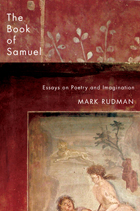 The Book of Samuel: Essays on Poetry and Imagination
Mark Rudman
Northwestern University Press, 2009 Crisis, breakdown, rejuvenation: this is the territory of poetry that Rudman takes readers into with this set of essays. Constructed as a series of character studies, the essays are rooted in autobiographical material with biographical counterpoints, tying the poets distinctly to places. Even as they are placed, however, they are displaced: Rudman's subjects, from D.H. Lawrence to Czeslaw Milosz to T. S. Eliot, are almost all exiles, either geographically or within themselves. This exile spins anger into energy, transmuting emotion into imagination the same way that Passaic Falls, known to William Carlos Williams, turns water into power. The mosaic style of the essays touches on nerve after nerve, avoiding the snags of academic jargon to ease towards an illuminating truth about the artists' shifting work and worlds. Some of the Samuels—Beckett and Fuller—were able to navigate these shifts, while others--Coleridge and Johnson--are shown to be less able to transmute their energy into motion.
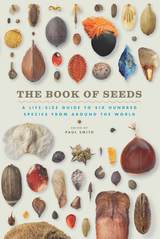 The Book of Seeds: A Life-Size Guide to Six Hundred Species from around the World
Edited by Paul Smith
University of Chicago Press, 2018 Seeds are nature’s consummate survivors. The next time you admire a field of waving green grassland or a stunning grove of acacia, stop to consider how it got that way—often against incredible odds. Seeds can survive freezing temperatures and drought. They can pass through our digestive systems without damage and weather a trip across the ocean, hitching a ride on marine debris. They can even endure complete desiccation, a feat taken to extraordinary lengths by the date palm, a seed from which was recovered from the palace of Herod the Great was germinated after some two thousand years.
The Book of Seeds takes readers through six hundred of the world’s seed species, revealing their extraordinary beauty and rich diversity. Each page pairs a beautifully composed photo of a seed—life-size, and, in some cases, enlarged to display fine detail—with a short description, a map showing distribution, and information on conservation status. The whole spectrum of seeds is covered here. There are prolific species like corn and less widely distributed species, like the brilliant blue seeds of the traveler’s palm or the bird of paradise flower, aptly named for its distinctive orange coiffure. There are tiny seeds and seeds weighing up to forty pounds. And while seeds in all their shapes, sizes, and colors grant us sustenance, there are even some we would be wise to treat with caution, such as the rosary pea, whose seeds are considered more toxic than ricin.
The essential guide to these complex plant creations, The Book of Seeds offers readers a rare, up-close look that will inspire scientists and nature lovers alike.
The Book of Settlements: Landnamabok
Herman Palsson
University of Manitoba Press, 2007 Iceland was the last country in Europe to become inhabited, and we know more about the beginnings and early history of Icelandic society than we do of any other in the Old World. This world was vividly recounted in The Book of Settlements, first compiled by the first Icelandic historians in the thirteenth century. It describes in detail individuals and daily life during the Icelandic Age of Settlement.
The Book of Seventy
Alicia Suskin Ostriker
University of Pittsburgh Press, 2009 Alicia Ostriker seizes the opportunity to take us where too few poets have been able to take us: into a domain of what our fabulists like to call the “golden years.” as we live longer, we become inevitably curious about the actual texture of these late years, curious about what happens in the soul. Out of that curiosity is a new kind of poetry born, an elderstile that has passion and irony, wisdom, folly, clarity and tenderness. In her keen engagement with the self and the world, Ostriker offers us a voice and a perspective that explore the territory of seventy and beyond.
The Book of Shaker Furniture
John Kassay
University of Massachusetts Press, 1980 Of the more than one hundred experiments in communitarian living that proliferated in America during the nineteenth century, the Untied Society of Believers in Christ's Second Appearing , whose adherents are best known as "Shakers," is certainly one of the most interesting, successful, and enduring. This book is a collection of furniture made by members of this remarkable American religious sect.
The Book of Shares
Edmond Jabès
University of Chicago Press, 1989 As we approach sharing let us ask: "What belongs to me?"
Balance sheet of a life ratified by death.
Whatever exists has no existence unless shared.
Possessions under seal are lost possessions.
At first sight, giving, offering yourself in order to receive an equivalent gift in return, would seem to be ideal sharing.
But can All be divided?
Can a feeling, a book, a life be shared entirely?
On the other hand, if we cannot share all, what remains and will always remain outside sharing? What has never, at the heart of our possessions, been ours?
And what if we can share the vital desire to share, our only means of escape from solitude, from nothingness?
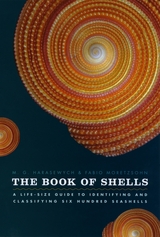 The Book of Shells: A Life-Size Guide to Identifying and Classifying Six Hundred Seashells
M. G. Harasewych and Fabio Moretzsohn
University of Chicago Press, 2010 Who among us hasn’t marveled at the diversity and beauty of shells? Or picked one up, held it to our ear, and then gazed in wonder at its shape and hue? Many a lifelong shell collector has cut teeth (and toes) on the beaches of the Jersey Shore, the Outer Banks, or the coasts of Sanibel Island. Some have even dived to the depths of the ocean. But most of us are not familiar with the biological origin of shells, their role in explaining evolutionary history, and the incredible variety of forms in which they come.
Shells are the external skeletons of mollusks, an ancient and diverse phylum of invertebrates that are in the earliest fossil record of multicellular life over 500 million years ago. There are over 100,000 kinds of recorded mollusks, and some estimate that there are over amillion more that have yet to be discovered. Some breathe air, others live in fresh water, but most live in the ocean. They range in size from a grain of sand to a beach ball and in weight from a few grams to several hundred pounds. And in this lavishly illustrated volume, they finally get their full due.
The Book of Shells offers a visually stunning and scientifically engaging guide to six hundred of the most intriguing mollusk shells, each chosen to convey the range of shapes and sizes that occur across a range of species. Each shell is reproduced here at its actual size, in full color, and is accompanied by an explanation of the shell’s range, distribution, abundance, habitat, and operculum—the piece that protects the mollusk when it’s in the shell. Brief scientific and historical accounts of each shell and related species include fun-filled facts and anecdotes that broaden its portrait.
The Matchless Cone, for instance, or Conus cedonulli, was one of the rarest shells collected during the eighteenth century. So much so, in fact, that a specimen in 1796 was sold for more than six times as much as a painting by Vermeer at the same auction. But since the advent of scuba diving, this shell has become far more accessible to collectors—though not without certain risks. Some species of Conus produce venom that has caused more than thirty known human deaths.
The Zebra Nerite, the Heart Cockle, the Indian Babylon, the Junonia, the Atlantic Thorny Oyster—shells from habitats spanning the poles and the tropics, from the highest mountains to the ocean’s deepest recesses, are all on display in this definitive work.
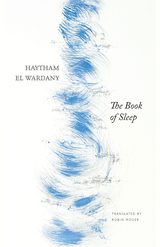 The Book of Sleep
Haytham El Wardany
Seagull Books, 2020 Now in paperback, The Book of Sleep is a landmark in contemporary Arabic literature.
What is sleep? How can this most unproductive of human states—metaphorically called death’s shadow or considered the very pinnacle of indolence—be envisioned as action and agency? And what do we become in sleep? What happens to the waking selves we understand ourselves to be?
Written in the spring of 2013, as the Egyptian government of President Mohammed Morsi was unraveling in the face of widespread protests, The Book of Sleep is a landmark in contemporary Arabic literature. Drawing on the devices and forms of poetry, philosophical reflection, political analysis, and storytelling, this genre-defying work presents us with an assemblage of fragments that combine and recombine, circling around their central theme but refusing to fall into its gravity.
“My concern was not to create a literary product in the conventional sense, but to try and use literature as a methodology for thinking,” El Wardany explains. In this volume, sleep shapes sentences and distorts conventions. Its protean instability throws out memoir and memory, dreams and hallucinatory reverie, Sufi fables and capitalist parables, in the quest to shape a question. The Book of Sleep is a generous and generative attempt to reimagine possibility and hope in a world of stifling dualities and constrictions.
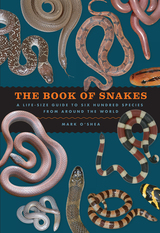 The Book of Snakes: A Life-Size Guide to Six Hundred Species from around the World
Mark O'Shea
University of Chicago Press, 2018 For millennia, humans have regarded snakes with an exceptional combination of fascination and revulsion. Some people recoil in fear at the very suggestion of these creatures, while others happily keep them as pets. Snakes can convey both beauty and menace in a single tongue flick and so these creatures have held a special place in our cultures. Yet, for as many meanings that we attribute to snakes—from fertility and birth to sin and death—the real-life species represent an even wider array of wonders.
The Book of Snakes presents 600 species of snakes from around the world, covering nearly one in six of all snake species. It will bring greater understanding of a group of reptiles that have existed for more than 160 million years, and that now inhabit every continent except Antarctica, as well as two of the great oceans.
This volume pairs spectacular photos with easy-to-digest text. It is the first book on these creatures that combines a broad, worldwide sample with full-color, life-size accounts. Entries include close-ups of the snake’s head and a section of the snake at actual size. The detailed images allow readers to examine the intricate scale patterns and rainbow of colors as well as special features like a cobra’s hood or a rattlesnake’s rattle. The text is written for laypeople and includes a glossary of frequently used terms. Herpetologists and herpetoculturists alike will delight in this collection, and even those with a more cautious stance on snakes will find themselves drawn in by the wild diversity of the suborder Serpentes.
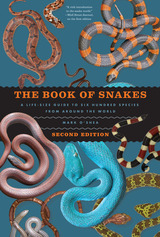 The Book of Snakes: A Life-Size Guide to Six Hundred Species from around the World
Mark O'Shea
University of Chicago Press, 2023 Updated to reflect the most recent species classifications, a second edition of the beautifully illustrated and beloved guide to 600 members of the suborder Serpentes.
For millennia, humans have regarded snakes with an exceptional combination of fascination and revulsion. Some people recoil in fear at the very suggestion of these creatures, while others happily keep them as pets. Snakes can convey both beauty and menace in a single tongue flick, and so these creatures have held a special place in our cultures. Yet, for as many meanings as we attribute to snakes—from fertility and birth to sin and death—the real-life species represent an even wider array of wonders.
Now in a new edition, reflecting the most recent species classifications, The Book of Snakes presents 600 species of snakes from around the world, covering roughly one in seven of all snake species. It will bring greater understanding of a group of reptiles that have existed for more than 160 million years and that now inhabit every continent except Antarctica, as well as two of the great oceans.
This volume pairs spectacular photos with easy-to-digest text. It is the first book on these creatures that combines a broad, worldwide sample with full-color, life-size accounts. Entries include close-ups of the snake’s head and a section of the snake at actual size. The detailed images allow readers to examine the intricate scale patterns and rainbow of colors as well as special features like a cobra’s hood or a rattlesnake’s rattle. The text is written for laypeople and includes a glossary of frequently used terms. Herpetologists and herpetoculturists alike will delight in this collection, and even those with a more cautious stance on snakes will find themselves drawn in by the wild diversity of the suborder Serpentes.
The Book of Stones and Angels
Harold Schweizer
Tupelo Press, 2015 Thematically exploring the contrasts and dynamic interplay between solidity and ephemerality, in his first book of poems Harold Schweizer creates great dramatic tension by poising complex, expansive sentences against the strictures of taut margins. While portraying angels as unfettered, Schweizer doesn’t accept the platonic notion that we ever transcend our physical world. Instead, he imagines angels as immanent, everywhere: “they / inhabit all things.” The Book of Stones and Angels attempts to disclose the angelic lightness of stones in the obstinate materiality of angels, amid the lightness and frailty of our existence.
The Book of Ten
Susan Wood
University of Pittsburgh Press, 2011 “Susan Wood brings us this new collection of her poems and a steadfast intent to write with courage of history and contemporary American life. She is able—adept, even—to make things mundane seem complex and worthy of her pen while in due contrast illuminating things that could be considered justly grand as very human, tactile, and near. Like Jorie Graham or Geoffery Hill, she is swift and unapologetic about plunking her reader down in the middle of some landscape—as if the dear reader had been on holiday there with her all along—and provides details of her views of this place, making it familiar at once even if it screams unknown, remote, or exotic.”—Coal Hill Review
The Book of the Body Politic
Christine de Pizan
Iter Press, 2021 The first political treatise written by a woman.
Christine de Pizan’s The Book of the Body Politic is the first political treatise written by a woman. It not only advises the prince, but nobles, knights, and common people as well. It promotes the ideals of interdependence and social responsibility. Rooted in the mindset of medieval Christendom, The Book of the Body Politic heralds the humanism of the Renaissance, highlighting classical culture and Roman civic virtues. This new edition and translation offers a faithful rendering of Christine de Pizan’s writing, as well as a thorough contextualization of her career as a political writer at the end of the Middle Ages in France. The Book of the Body Politic resounds to this day, urging for the need for probity in public life and the importance of responsibilities and rights.
The Book of the Dead
Muriel Rukeyser
West Virginia University Press, 2018 Written in response to the Hawk’s Nest Tunnel disaster of 1931 in Gauley Bridge, West Virginia, The Book of the Dead is an important part of West Virginia’s cultural heritage and a powerful account of one of the worst industrial catastrophes in American history. The poems collected here investigate the roots of a tragedy that killed hundreds of workers, most of them African American. They are a rare engagement with the overlap between race and environment in Appalachia.
Published for the first time alongside photographs by Nancy Naumburg, who accompanied Rukeyser to Gauley Bridge in 1936, this edition of The Book of the Dead includes an introduction by Catherine Venable Moore, whose writing on the topic has been anthologized in Best American Essays.
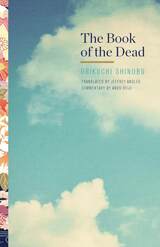 The Book of the Dead
Orikuchi Shinobu
University of Minnesota Press, 2017 First published in 1939 and extensively revised in 1943, The Book of the Dead, loosely inspired by the tale of Isis and Osiris from ancient Egypt, is a sweeping historical romance that tells a gothic tale of love between a noblewoman and a ghost in eighth-century Japan. Its author, Orikuchi Shinobu, was a well-received novelist, distinguished poet, and an esteemed scholar. He is often considered one of the fathers of Japanese folklore studies, and The Book of the Dead is without a doubt the most important novel of Orikuchi’s career—and it is a book like no other. Here, for the first time, is the complete English translation of Orikuchi’s masterwork, whose vast influence is evidenced by multiple critical studies dedicated to it and by its many adaptations, which include an animated film and a popular manga. This translation features an introduction by award-winning translator Jeffrey Angles discussing the historical background of the work as well as its major themes: the ancient origins of the Japanese nation, the development of religion in a modernizing society, and the devotion necessary to create a masterpiece. Also included are three chapters from The Mandala of Light by Japanese intellectual historian Andō Reiji, who places the novel and Orikuchi’s thought in the broader intellectual context of early twentieth-century Japan. The Book of the Dead focuses on the power of faith and religious devotion, and can be read as a parable illustrating the suffering an artist must experience to create great art. Readers will soon discover that a great deal lies hidden beneath the surface of the story; the entire text is a modernist mystery waiting to be decoded.
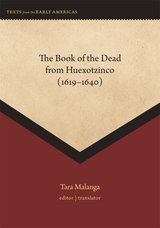 The Book of the Dead from Huexotzinco (1619-1640)
Tara Malanga
Harvard University Press The Book of the Dead from Huexotzinco (El libro de los difuntos) is a Nahuatl-language death registry maintained by the Indigenous people of Huexotzinco, Mexico, between 1619 and 1640. On its fragile vellum pages are the names of over twenty-five hundred Indigenous men, women, and children who succumbed to the waves of epidemic disease that followed the Spanish invasion and conquest of Mexico. The registry was created during a “golden age” of Nahuatl record-keeping, when the Nahua were integrated enough into colonial systems to meet the administrative demands of the Spanish Church, yet still rooted in their own cultural traditions, recording deaths in Nahuatl with classifications that reflected their own cultural understanding of death and memory. By transcribing and translating the registry for the first time, this work offers a rare, intimate look at life and death in a colonial Nahua community (altepetl) during the devastating epidemics of seventeenth-century Mexico.
Book of the Disappeared: The Quest for Transnational Justice
Jennifer Heath and Ashraf Zahedi, Editors
University of Michigan Press, 2023 Book of the Disappeared confronts worldwide human rights violations of enforced disappearance and genocide and explores the global quest for justice with forceful, outstanding contributions by respected scholars, expert practitioners, and provocative contemporary artists. This profoundly humane book spotlights our historic inhumanity while offering insights for survival and transformation.
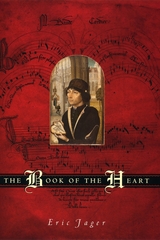 The Book of the Heart
Eric Jager
University of Chicago Press, 2000 In today's increasingly electronic world, we say our personality traits are "hard-wired" and we "replay" our memories. But we use a different metaphor when we speak of someone "reading" another's mind or a desire to "turn over a new leaf"—these phrases refer to the "book of the self," an idea that dates from the beginnings of Western culture.
Eric Jager traces the history and psychology of the self-as-text concept from antiquity to the modern day. He focuses especially on the Middle Ages, when the metaphor of a "book of the heart" modeled on the manuscript codex attained its most vivid expressions in literature and art. For instance, medieval saints' legends tell of martyrs whose hearts recorded divine inscriptions; lyrics and romances feature lovers whose hearts are inscribed with their passion; paintings depict hearts as books; and medieval scribes even produced manuscript codices shaped like hearts.
"The Book of the Heart provides a fresh perspective on the influence of the book as artifact on our language and culture. Reading this book broadens our appreciation of the relationship between things and ideas."—Henry Petroski, author of The Book on the Bookshelf
 Book Of The Incipit: Beginnings in the Fourteenth Century
D. Vance Smith
University of Minnesota Press, 2001 An intriguing evaluation of the concept of beginnings in the medieval period. Medieval Studies/Literary Theory An intriguing evaluation of the concept of beginnings in the medieval period. In the first book to examine one of the most peculiar features of one of the greatest and most perplexing poems of England’s late Middle Ages-the successive attempts of Piers Plowman to begin, and to keep beginning-D. Vance Smith compels us to rethink beginning, as concept and practice, in both medieval and contemporary terms.The problem of beginning was invested with increasing urgency in the fourteenth century, imagined and grappled with in the courts, the churches, the universities, the workshops, the fields, and the streets of England. The Book of the Incipit reveals how Langland’s poem exemplifies a widespread interest in beginning in the thirteenth and fourteenth centuries, an interest that appears in such divergent fields as the physics of motion, the measurement of time, logic, grammar, rhetoric, theology, book production, and insurrection. Smith offers a theoretical understanding of beginning that departs from the structuralisms of Edward Said and the traditional formalisms of A. D. Nuttall and most medievalist and modernist treatments of closure. Instead, he conceives a work’s beginning as a figure of the beginning of the work itself, the inception of language as the problem of beginning to which we continue to return.ISBN 0-8166-3760-1 Cloth/jacket £24.50 $34.95x296 Pages 5 7/8 x 9 MayMedieval Cultures Series, volume 28Translation Inquiries: University of Minnesota Press
The Book of the Mutability of Fortune
Christine de Pizan
Iter Press, 2017 Christine de Pizan (ca. 1364–ca. 1431) has long been recognized as France’s first professional woman of letters, and interest in her voluminous and wide-ranging corpus has been steadily rising for decades. During the tumultuous later years of the Hundred Years’ War, Christine’s lone but strong feminine voice could be heard defending women, expounding the highest ideals for good governance, and lamenting France’s troubled times alongside her own personal trials. In The Mutability of Fortune, Christine fuses world history with autobiography to demonstrate mankind’s subjugation to the ceaselessly changing, and often cruel, whims of Fortune. Now, for the first time, this poem is accessible to an English-speaking audience, further expanding our appreciation of this ground-breaking woman author and her extraordinary body of work.
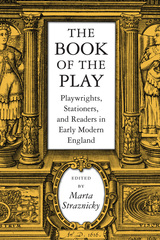 The Book of the Play: Playwrights, Stationers, and Readers in Early Modern England
Marta Straznicky
University of Massachusetts Press, 2006 The Book of the Play is a collection of essays that examines early modern drama in the context of book history. Focusing on the publication, marketing, and readership of plays opens fresh perspectives on the relationship between the cultures of print and performance and more broadly between drama and the public sphere. Marta Straznicky's introduction offers a survey of approaches to the history of play reading in this period, and the collection as a whole consolidates recent work in textual, bibliographic, and cultural studies of printed drama.
Individually, the essays advance our understanding of play reading as a practice with distinct material forms, discourses, social settings, and institutional affiliation. Part One, "Real and Imagined Communities," includes four essays on play-reading communities and the terms in which they are distinguished from the reading public at large. Cyndia Clegg surveys the construction of readers in prefaces to published plays; Lucy Munro traces three separate readings of a single play, Edward Sharpham's The Fleer; Marta Straznicky studies women as readers of printed drama; and Elizabeth Sauer describes how play reading was mobilized for political purposes in the period of the civil war.
In Part Two, "Play Reading and the Book Trade," five essays consider the impact of play reading on the public sphere through the lens of publishing practices. Zachary Lesser offers a revisionist account of black-letter typeface and the extent to which it may be understood as an index of popular culture; Alan Farmer examines how the emerging news trade of the 1620s and 1630s affected the marketing of printed drama; Peter Berek traces the use of generic terms on title pages of plays to reveal their intersection with the broader culture of reading; Lauren Shohet demonstrates that the Stuart masque had a parallel existence in the culture of print; and Douglas Brooks traces the impact print had on eclipsing performance as the medium in which the dramatist could legitimately lay claim to having authored his text.
The individual essays focus on selected communities of readers, publication histories, and ideologies and practices of reading; the collection as a whole demonstrates the importance of textual production and reception to understanding the place of drama in the early modern public sphere.
The Book of the Twelve and Beyond: Collected Essays of James D. Nogalski
James D. Nogalski
SBL Press, 2017 A critical collection for specialists and serious students of prophetic literature
This book contains a collection of essays dealing with texts in the Book of the Twelve written by James D. Nogalski beginning in 1993. Essays use various methodological approaches to prophetic literature, including redaction criticism, form criticism, text criticism, intertextuality, and literary analysis. The variety of methods employed by one scholar, as well as the diverse texts treated, makes this volume useful for exploring changes in the field of prophetic studies in the last quarter century.
Features
- A helpful entry into the issues surrounding the historical and literary interpretation of the Book of the Twelve as a redacted corpus
- A collection of sixteen essays using a variety of methods
- Bracketed page numbers coordinating these essays with the pages in original publications
The Book of the Twelve and the New Form Criticism
Mark J. Boda
SBL Press, 2015 An exploration of genre questions for scholars and students
Contributors to this volume explore the theoretical issues at stake in recent changes in form criticism and the practical outcomes of applying the results of these theoretical shifts to the Book of the Twelve. This volume combines self-conscious methodological reflection with examination of specific texts illustrating the value of certain methodological approaches.
Features:
- Essays that demonstrate the practical consequences of theoretical decisions
- Contributions that illustrate new interpretations
- Focused attention to genre in the Book of the Twelve
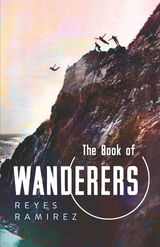 The Book of Wanderers
Reyes Ramirez
University of Arizona Press, 2022 What do a family of luchadores, a teen on the run, a rideshare driver, a lucid dreamer, a migrant worker in space, a mecha soldier, and a zombie-and-neo-Nazi fighter have in common?
Reyes Ramirez’s dynamic short story collection follows new lineages of Mexican and Salvadoran diasporas traversing life in Houston, across borders, and even on Mars. Themes of wandering weave throughout each story, bringing feelings of unease and liberation as characters navigate cultural, physical, and psychological separation and loss from one generation to the next in a tumultuous nation.
The Book of Wanderers deeply explores Houston, a Gulf Coast metropolis that incorporates Southern, Western, and Southwestern identities near the borderlands with a connection to the cosmos. As such, each story becomes increasingly further removed from our lived reality, engaging numerous genres from emotionally touching realist fiction to action-packed speculative fiction, as well as hallucinatory realism, magical realism, noir, and science fiction.
Fascinating characters and unexpected plots unpack what it means to be Latinx in contemporary—and perhaps future—America. The characters work, love, struggle, and never stop trying to control their reality. They dream of building communities and finding peace. How can they succeed if they must constantly leave one place for another? In a nation that demands assimilation, how can they define themselves when they have to start anew with each generation? The characters in The Book of Wanderers create their own lineages, philosophies for life, and markers for their humanity at the cost of home. So they remain wanderers . . . for now.
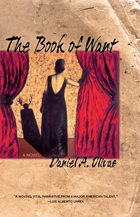 The Book of Want: A Novel
Daniel A. Olivas
University of Arizona Press, 2011 When Moses descended Mount Sinai carrying the Ten Commandments, he never could have foreseen how one family in Los Angeles in the early twenty-first century would struggle to live by them.
Conchita, a voluptuous, headstrong single woman of a certain age, sees nothing wrong with enjoying the company of handsome—and usually much younger—men...that is, until she encounters a widower with unusual gifts and begins to think about what she really wants out of life.
Julieta, Conchita’s younger sister, walks a more traditional path, but she and her husband each harbor secrets that could change their marriage and their lives forever. Their twin sons, both in college, struggle to find fulfillment. Mateo refuses to let anyone stand in the way of his happiness, while Rolando grapples with his sexuality and the family’s expectations. And from time to time, Belén, the family’s late matriarch, pays a visit to advise, scold, or cajole her hapless descendants.
A delightful family tapestry woven with the threads of all those whose lives are touched by Conchita, The Book of Want is an enchanting blend of social and magical realism that tells a charming story about what it means to be fully human.
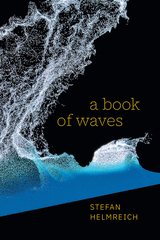 A Book of Waves
Stefan Helmreich
Duke University Press, 2023 In A Book of Waves Stefan Helmreich examines ocean waves as forms of media that carry ecological, geopolitical, and climatological news about our planet. Drawing on ethnographic work with oceanographers and coastal engineers in the Netherlands, the United States, Australia, Japan, and Bangladesh, Helmreich details how scientists at sea and in the lab apprehend waves’ materiality through abstractions, seeking to capture in technical language these avatars of nature at once periodic and irreversible, wild and pacific, ephemeral and eternal. For researchers and their publics, the meanings of waves also reflect visions of the ocean as an environmental infrastructure fundamental to trade, travel, warfare, humanitarian rescue, recreation, and managing sea level rise. Interleaving ethnographic chapters with reflections on waves in mythology, surf culture, feminist theory, film, Indigenous Pacific activisms, Black Atlantic history, cosmology, and more, Helmreich demonstrates how waves mark out the wakes and breaks of social histories and futures.
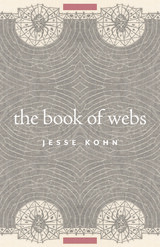 the book of webs
Jesse Kohn
University of Massachusetts Press, 2023 Honorable Mention, 2023 Big Other Readers’ Choice Award
Word spreads from one recovering self-inflicted eye surgery patient to the next of a mystical book capable of overturning the Burlingtonian empire. Captivating and devious, the book of webs is constructed out of misremembered fragments, conflicting histories, and secrets whispered in the darkness. The insurgents tell of an enemy so powerful it owns the air, dictates reality, and has even managed to co-opt their thoughts. Their only hope is to conspire with the uprisings of their bodies: slips of the tongue, excretions, tics, bad hair days, and, most importantly, their dreams. In this darkly comic and inventive debut novel, Jesse Kohn introduces a network of shape-shifters and misfits. A militant priestess broods over orphaned angel eggs. A post-punk band animates a messianic homunculus made of belly button lint. A failed dream journalist goes on a terrible first date to heaven. Each misadventure is a chapter in a book devised to oppose the despotic order of their enemy—the book of webs.
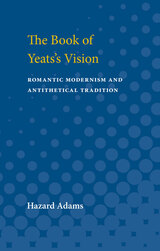 The Book of Yeats's Vision: Romantic Modernism and Antithetical Tradition
Hazard Adams
University of Michigan Press, 1995 In this sequel to his critical study of Yeats's poems, Hazard Adams turns to Yeats's odd, eccentric, comic, and finally serious prose work A Vision. A Vision has long exasperated some readers with its occultist connections and strange, pseudo-geometrical diagrams, and intrigued others with its odd origins and complex thought. Adams argues that the book is of extraordinary interest for its literary merit, its place in intellectual history as an example of romanticism's persistence in modernism, and its oblique defense of poetic fiction-making. Rather than treating the book in terms of its historical and biographical genesis, Adams discusses the finished product as it appeared in 1937, a uniquely woven fictional fabric in which Yeats invents himself as a character. The "technical" sections of A Vision are presented as part of this drama and are illustrated by charts that appeared originally in A Vision and explanatory ones by the author. In addition to his careful reading of the text, Adams shows that A Vision also presents a theory of poetry, art, and myth that goes under the Yeatsian term "antitheticality." This notion, which governs all of the dimensions of A Vision—philosophical, aesthetic, historical, and psychological—is drawn from a tradition stretching back to pre-Socratic ideas of warring opposites, through Giambattista Vico's account of "poetic wisdom" and William Blake's concept of "contraries." The Book of Yeats's Vision is essential reading for literary theorists, students, and scholars of Irish literature, and admirers of Yeats interested in his creative intellectual life.
The Book of Zechariah: The JPS Audio Version
JPS: The Jewish Publication Society
Jewish Publication Society, 2009 The audio version of the Book of Zechariah was created by JPS and JBI. Using the NJPS translation, Norma Fire narrated this book exclusively for The Jewish Publication Society.
The Book of Zephaniah: The JPS Audio Version
JPS: The Jewish Publication Society
Jewish Publication Society, 2009 The audio version of the Book of Zephaniah was created by JPS and JBI. Using the NJPS translation, Kathy Ford narrated this book exclusively for The Jewish Publication Society.
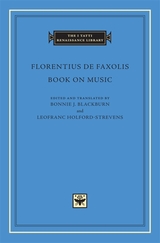 Book on Music
Florentius de Faxolis
Harvard University Press, 2010 Between 1485 and 1492 Cardinal Ascanio Sforza was the recipient of a music treatise composed for him by “Florentius Musicus” (Florentius de Faxolis), who had served him in Naples and Rome. Now in Milan, the richly illuminated small parchment codex bears witness to the musical interests of the cardinal, himself an avid singer taught by Duke Ercole d’Este. Florentius, whose treatise, found in no other source, is edited here for the first time, evidently took the cardinal’s predilections into account, for the Book on Music is unusual for its emphasis on “the praises, power, utility, necessity, and effect of music”: he devotes far more space to citations from classical and medieval authors than is the norm, and his elevated style shows that he aspires to appear as a humanist and not merely a technician. Likewise, the production quality of the manuscript indicates the acceptance of music’s place within the high culture of the Quattrocento. The author’s unusual insights into the musical thinking of his day are discussed in the ample commentary. The editors, a Renaissance musicologist (Bonnie Blackburn) and a classical scholar (Leofranc Holford-Strevens), have combined their disciplines to pay close attention both to Florentius’ text and to his teachings.
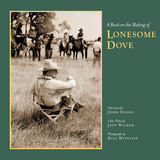 A Book on the Making of Lonesome Dove
By John Spong
University of Texas Press, 2012 Widely acclaimed as the greatest Western ever made, Lonesome Dove has become a true American epic. Larry McMurtry’s Pulitzer Prize–winning novel was a New York Times best seller, with more than 2.5 million copies currently in print. The Lonesome Dove miniseries has drawn millions of viewers and won numerous awards, including seven Emmys. A Book on the Making of Lonesome Dove takes you on a fascinating behind-the-scenes journey into the creation of the book, the miniseries, and the world of Lonesome Dove. Writer John Spong talks to forty of the key people involved, including author Larry McMurtry; actors Robert Duvall, Tommy Lee Jones, Anjelica Huston, Diane Lane, Danny Glover, Ricky Schroder, D. B. Sweeney, Frederic Forrest, and Chris Cooper; executive producer and screenwriter Bill Wittliff; executive producer Suzanne de Passe; and director Simon Wincer. They and a host of others tell lively stories about McMurtry’s writing of the epic novel and the process of turning it into the miniseries Lonesome Dove. Accompanying their recollections are photographs of iconic props, costumes, set designs, and shooting scripts. Rounding out the book are continuity Polaroids used during filming and photographs taken on the set by Bill Wittliff, which place you behind the scenes in the middle of the action. Designed as a companion for A Book of Photographs from Lonesome Dove, Wittliff’s magnificent fine art volume, A Book on the Making of Lonesome Dove is a must-have for every fan of this American epic.
Book Reports: A Music Critic on His First Love, Which Was Reading
Robert Christgau
Duke University Press, 2019 In this generous collection of book reviews and literary essays, legendary Village Voice rock critic Robert Christgau showcases the passion that made him a critic—his love for the written word. Many selections address music, from blackface minstrelsy to punk and hip-hop, artists from Lead Belly to Patti Smith, and fellow critics from Ellen Willis and Lester Bangs to Nelson George and Jessica Hopper. But Book Reports also teases out the popular in the Bible and 1984 as well as pornography and science fiction, and analyzes at length the cultural theory of Raymond Williams, the detective novels of Walter Mosley, the history of bohemia, and the 2008 financial crisis. It establishes Christgau as not just the Dean of American Rock Critics, but one of America's most insightful cultural critics as well.
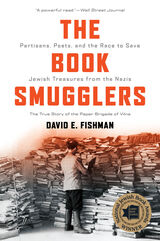 The Book Smugglers: Partisans, Poets, and the Race to Save Jewish Treasures from the Nazis
David E. Fishman
University Press of New England, 2018 The Book Smugglers is the nearly unbelievable story of ghetto residents who rescued thousands of rare books and manuscripts—first from the Nazis and then from the Soviets—by hiding them on their bodies, burying them in bunkers, and smuggling them across borders. It is a tale of heroism and resistance, of friendship and romance, and of unwavering devotion—including the readiness to risk one’s life—to literature and art. And it is entirely true. Based on Jewish, German, and Soviet documents, including diaries, letters, memoirs, and the author’s interviews with several of the story’s participants, The Book Smugglers chronicles the daring activities of a group of poets turned partisans and scholars turned smugglers in Vilna, “The Jerusalem of Lithuania.” The rescuers were pitted against Johannes Pohl, a Nazi “expert” on the Jews, who had been dispatched to Vilna by the Nazi looting agency, Einsatzstab Reichsleiter Rosenberg, to organize the seizure of the city’s great collections of Jewish books. Pohl and his Einsatzstab staff planned to ship the most valuable materials to Germany and incinerate the rest. The Germans used forty ghetto inmates as slave-laborers to sort, select, pack, and transport the materials, either to Germany or to nearby paper mills. This group, nicknamed “the Paper Brigade,” and informally led by poet Shmerke Kaczerginski, a garrulous, street-smart adventurer and master of deception, smuggled thousands of books and manuscripts past German guards. If caught, the men would have faced death by firing squad at Ponar, the mass-murder site outside of Vilna. To store the rescued manuscripts, poet Abraham Sutzkever helped build an underground book-bunker sixty feet beneath the Vilna ghetto. Kaczerginski smuggled weapons as well, using the group’s worksite, the former building of the Yiddish Scientific Institute, to purchase arms for the ghetto’s secret partisan organization. All the while, both men wrote poetry that was recited and sung by the fast-dwindling population of ghetto inhabitants. With the Soviet “liberation” of Vilna (now known as Vilnius), the Paper Brigade thought themselves and their precious cultural treasures saved—only to learn that their new masters were no more welcoming toward Jewish culture than the old, and the books must now be smuggled out of the USSR. Thoroughly researched by the foremost scholar of the Vilna Ghetto—a writer of exceptional daring, style, and reach—The Book Smugglers is an epic story of human heroism, a little-known tale from the blackest days of the war.
 The Book That Changed Europe: Picart and Bernard’s Religious Ceremonies of the World
Lynn Hunt, Margaret C. Jacob, and Wijnand Mijnhardt
Harvard University Press, 2010 Two French Protestant refugees in eighteenth-century Amsterdam gave the world an extraordinary work that intrigued and outraged readers across Europe. In this captivating account, Lynn Hunt, Margaret Jacob, and Wijnand Mijnhardt take us to the vibrant Dutch Republic and its flourishing book trade to explore the work that sowed the radical idea that religions could be considered on equal terms.
Famed engraver Bernard Picart and author and publisher Jean Frederic Bernard produced The Religious Ceremonies and Customs of All the Peoples of the World, which appeared in the first of seven folio volumes in 1723. They put religion in comparative perspective, offering images and analysis of Jews, Catholics, Muslims, the peoples of the Orient and the Americas, Protestants, deists, freemasons, and assorted sects. Despite condemnation by the Catholic Church, the work was a resounding success. For the next century it was copied or adapted, but without the context of its original radicalism and its debt to clandestine literature, English deists, and the philosophy of Spinoza.
Ceremonies and Customs prepared the ground for religious toleration amid seemingly unending religious conflict, and demonstrated the impact of the global on Western consciousness. In this beautifully illustrated book, Hunt, Jacob, and Mijnhardt cast new light on the profound insight found in one book as it shaped the development of a modern, secular understanding of religion.
A Book that Shook the World: Essays on Charles Darwin’s Origin of Species
Julian S. Huxley
University of Pittsburgh Press, 1958 This collection features five essays from noted theologians, philosophers, geneticists, and biologists who discuss the sweeping impact of Charles Darwin's On the Origin of Species on their respective fields. This volume, edited by Ralph Buchsbaum, professor of biology at the University of Pittsburgh, was published to celebrate the centenary of Darwin's announcement in 1858, along with Alfred Russel Wallace, of their independent discovery of the process of natural selection. Darwin's book was published one year later.
 The Book the Poet Makes: Collection and Re-Collection in W. B. Yeats’s The Tower and Robert Lowell’s Life Studies
Peter Nohrnberg
Harvard University Press Peter Nohrnberg asks how and why a collection of lyrics is transformed into a unified book. The topic is largely unexplored, and is important in several theoretical dimensions. Also, it activates an additional level of attention in the reading of lyric volumes. Nohrnberg's subject is not the lyric sequence, a recognized form, but the ordinary collections of poems. For his examples the author dwells on W. B. Yeats's The Tower and Robert Lowell's Life Studies. As Nohrnberg applies the distinction between poets of product and poets of process not to individual poems but to books of poems, he breaks new ground. His methods of reading books as well as poems will surely be imitated and extended by others. Among the especially productive concepts are that the first and last poems in the volume perform functions of framing, inaugurating, anticipating, summarizing, etc., and that one or more poems in the collection mirror the self-reflection and the reader's experience of the book as a whole. He also explores the parallel or repeating structures and forms, implied plots, and interwoven motifs and themes. Winner of both the undergraduate Thomas Temple Hoopes Prize and the LeBaron Russell Briggs Prize, this thesis offers marvelously fresh, perceptive comments on particular poems within these volumes.
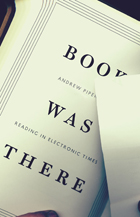 Book Was There: Reading in Electronic Times
Andrew Piper
University of Chicago Press, 2012 Andrew Piper grew up liking books and loving computers. While occasionally burying his nose in books, he was going to computer camp, programming his Radio Shack TRS-80, and playing Pong. His eventual love of reading made him a historian of the book and a connoisseur of print, but as a card-carrying member of the first digital generation—and the father of two digital natives—he understands that we live in electronic times. Book Was There is Piper’s surprising and always entertaining essay on reading in an e-reader world. Much ink has been spilled lamenting or championing the decline of printed books, but Piper shows that the rich history of reading itself offers unexpected clues to what lies in store for books, print or digital. From medieval manuscript books to today’s playable media and interactive urban fictions, Piper explores the manifold ways that physical media have shaped how we read, while also observing his own children as they face the struggles and triumphs of learning to read. In doing so, he uncovers the intimate connections we develop with our reading materials—how we hold them, look at them, share them, play with them, and even where we read them—and shows how reading is interwoven with our experiences in life. Piper reveals that reading’s many identities, past and present, on page and on screen, are the key to helping us understand the kind of reading we care about and how new technologies will—and will not—change old habits. Contending that our experience of reading belies naive generalizations about the future of books, Book Was There is an elegantly argued and thoroughly up-to-date tribute to the endurance of books in our ever-evolving digital world.
 Bookchin: A Critical Appraisal
Damian F. White
Pluto Press, 2008 This is the first comprehensive overview of the work of Murray Bookchin, the left-libertarian social theorist and political ecologist who is widely regarded as the visionary precursor of anti-corporate politics.
Bookchin's writing spans fifty years and engages with a wide variety of issues: from ecology to urban planning, from environmental ethics to debates about radical democracy. Weaving insights from Hegel and Marx, Kropotkin and Mumford, Bookchin presents a critical theory whose central utopian message is 'things could be other than they are'.
This accessible introduction maps the evolution of Bookchin’s project. It traces his controversial engagements with Marxism, anarchism, critical theory, postmodernism and eco-centric thought. It evaluates his attempt to develop a social ecology. Finally, it considers how his thinking relates to current debates in social theory and environmentalism, critical theory and philosophy, political ecology and urban theory.
Offering a clear account of Bookchin's key themes, this book provides a critical but sympathetic account of the strengths and weaknesses of Bookchin's writing.
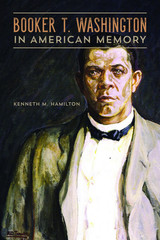 Booker T. Washington in American Memory
Kenneth M. Hamilton
University of Illinois Press, 2017 Since the 1960s, many historians have condemned Booker T. Washington as a problematic, even negative, influence on African American progress. This attitude dramatically contrasts with the nationwide outpouring of grief and reverence that followed Washington's death in 1915. Kenneth M. Hamilton describes how, when, where, and why Americans commemorated the life of Booker T. Washington. For months following his death, tens of thousands of Americans, especially blacks, honored his memory. Their memorials revealed that Washington enjoyed widespread national support for his vision of America and the programs that he imparted to achieve his aspirations. Their actions and articulations provide rich insight into how a cross section of Washington's contemporaries viewed him. From private messages of solace to public pronouncements, countless Americans portrayed him as a revered national icon. Among other characteristics, commemorates voiced their appreciation of his humanitarianism, humility, nationalism, perseverance, philanthropy, progressivism, spirituality, and wisdom. Washington was the leading advocate of the Yankee Protestantism Ethic, which promoted education, and personal qualities such as pragmatism, perseverance, cleanliness, thrift, and the dignity of labor among African Americans.
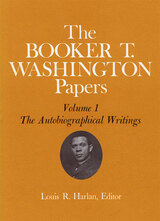 Booker T. Washington Papers Volume 1: The Autobiographical Writings
Booker T. Washington
University of Illinois Press, 1972 Here is the first of fifteen volumes in a project C. Vann Woodward called "the single most important research enterprise now under way in the field of American black history." Volume 1 contains Washington's Up from Slavery, one of the most widely read American autobiographies, in addition to The Story of My Life and Work, and six other autobiographical writings. Together, the selections provide readers with a first step toward understanding Washington and his immense impact. These writings reveal the moral values he absorbed from his mid-nineteenth-century experiences and teachers. As importantly, they present him to the world as he wished to be seen: as the black version of the American success hero and an exemplar of the Puritan work ethic that he believed to be the secret of his success. These works, along with so much of Washington's writing, served as a model for many black Americans striving to overcome poverty and prejudice.
|
|
